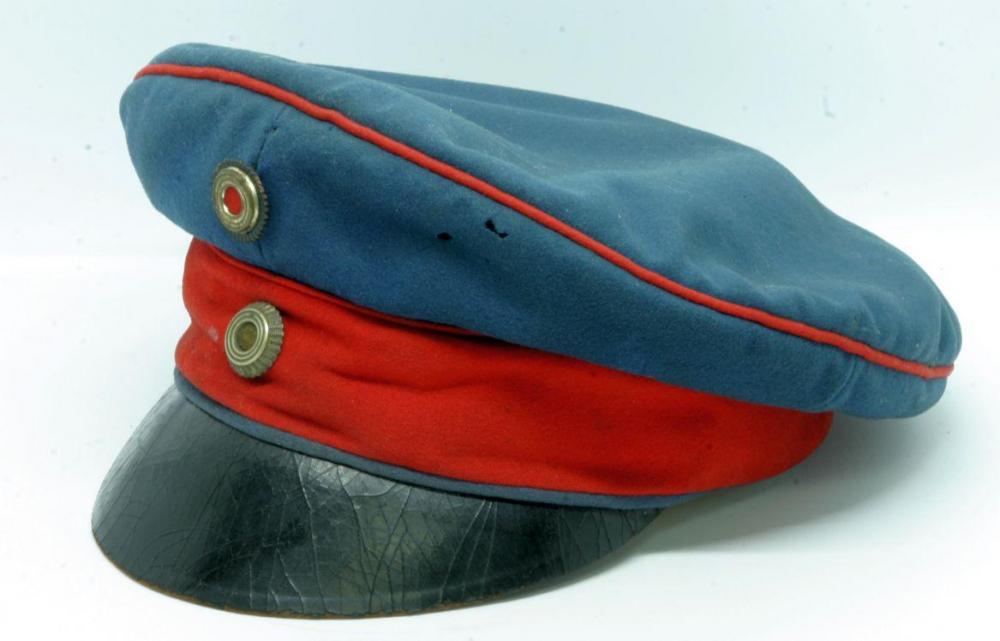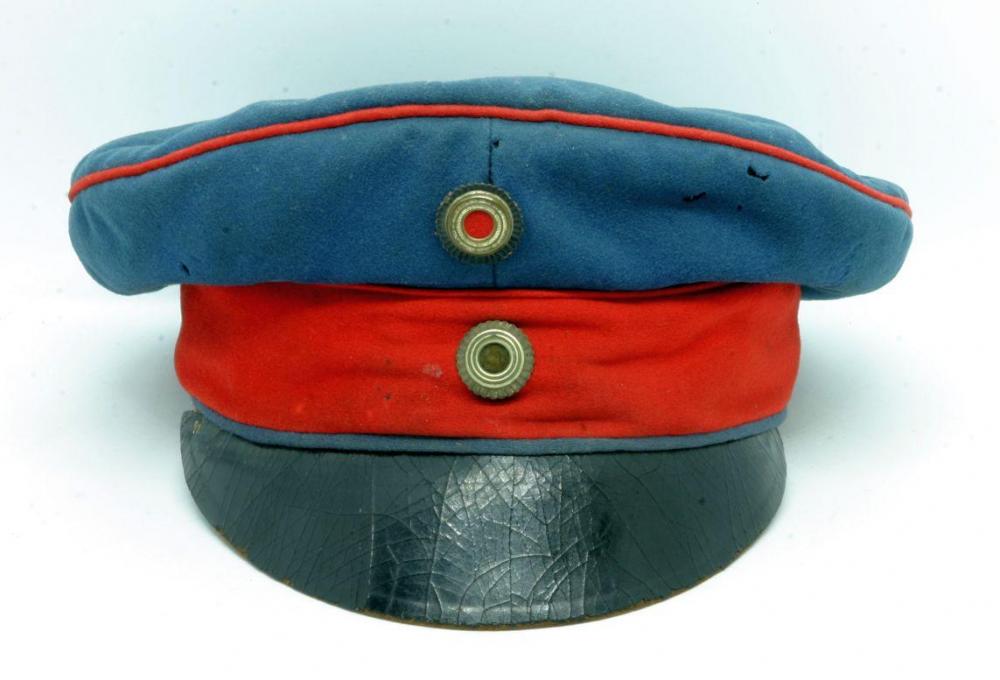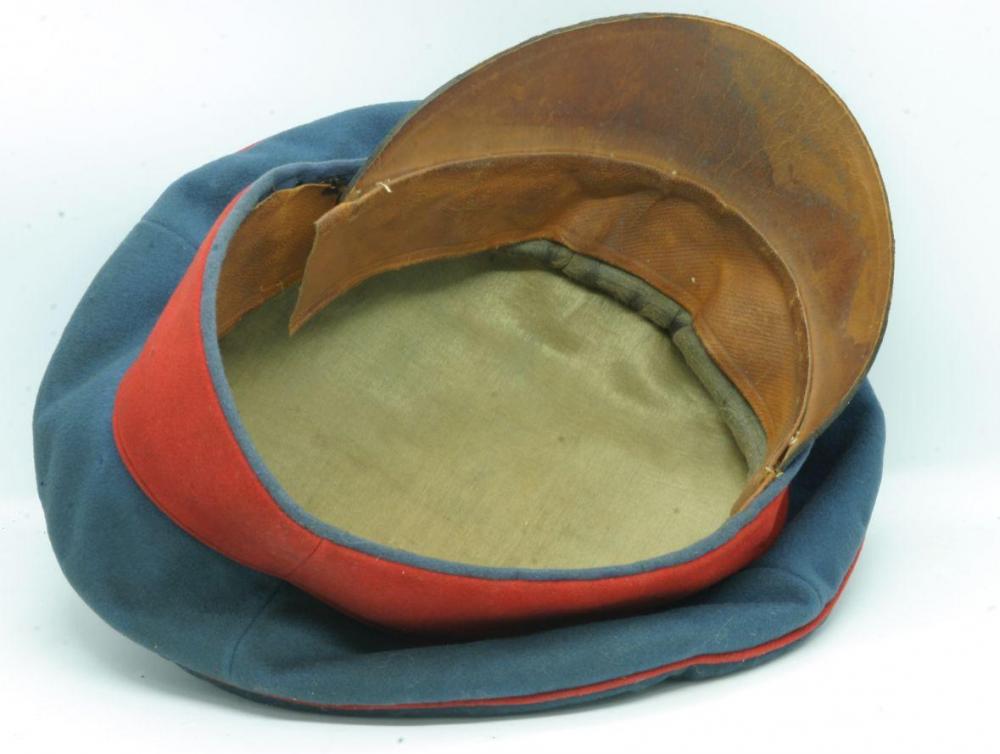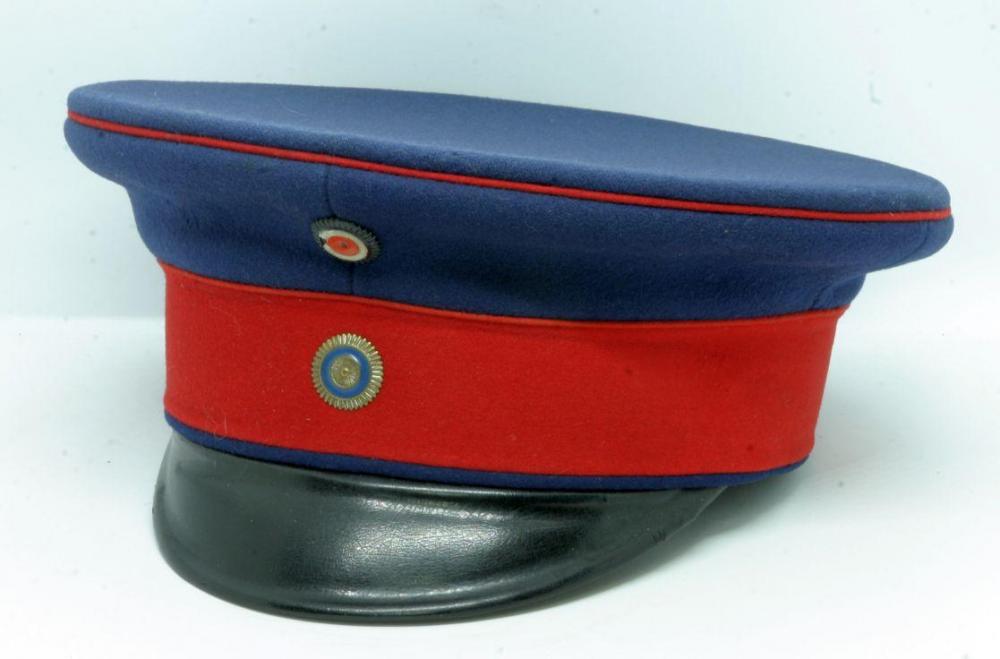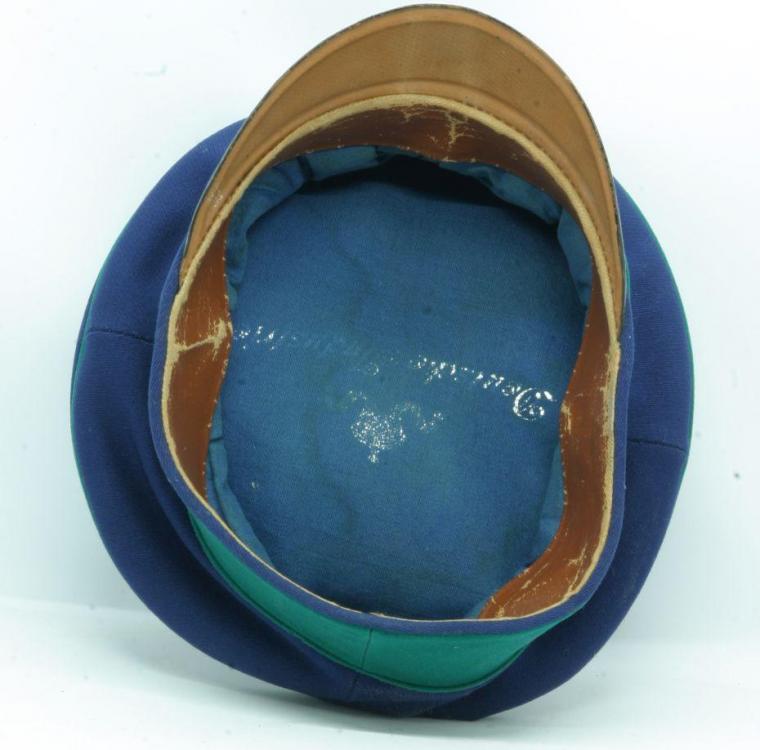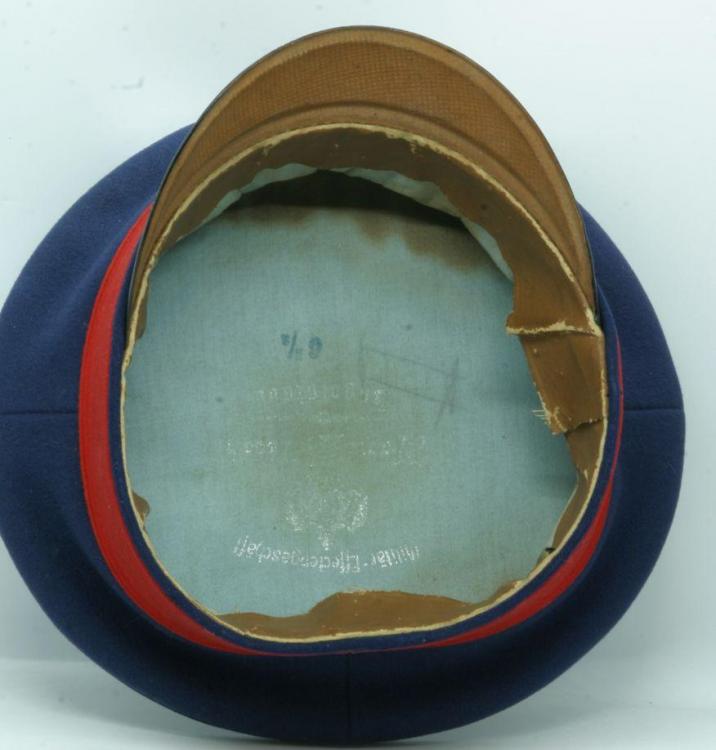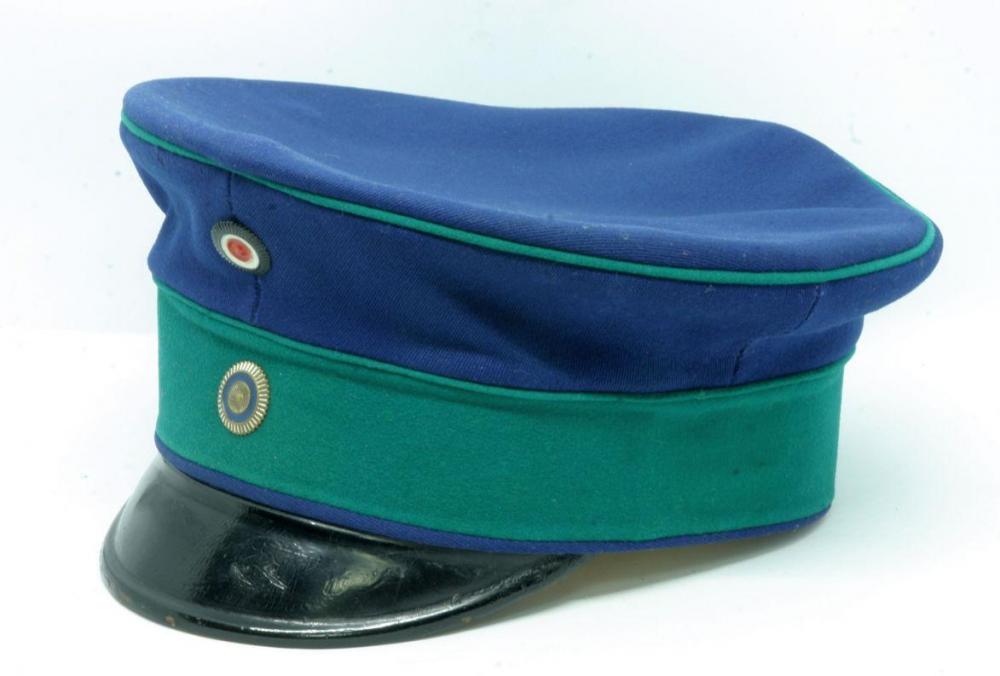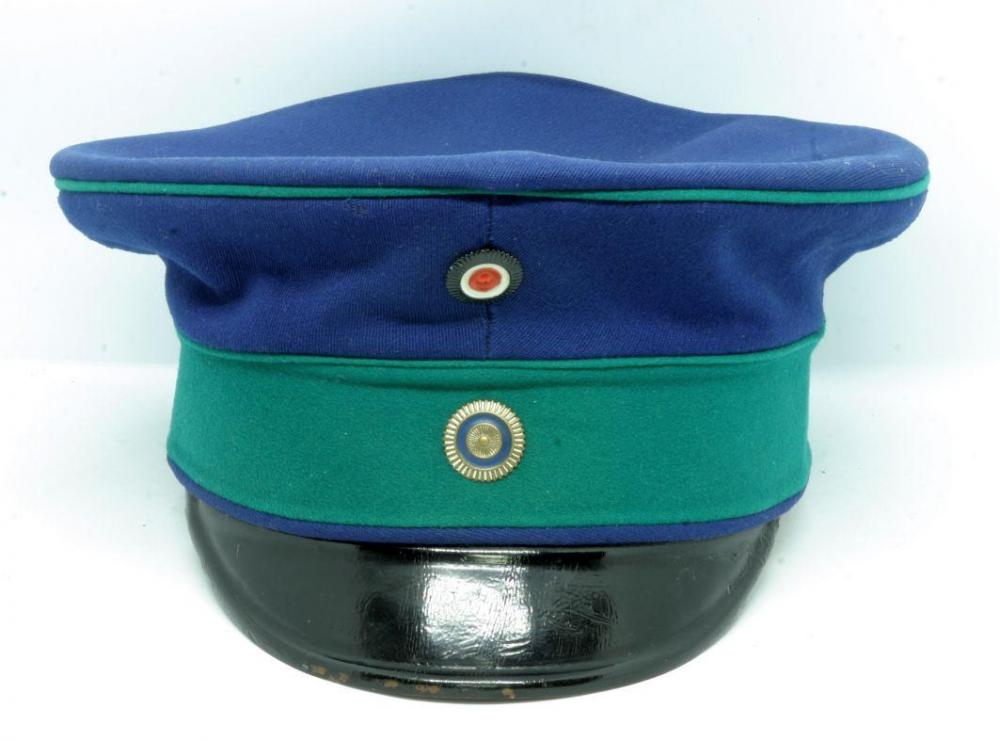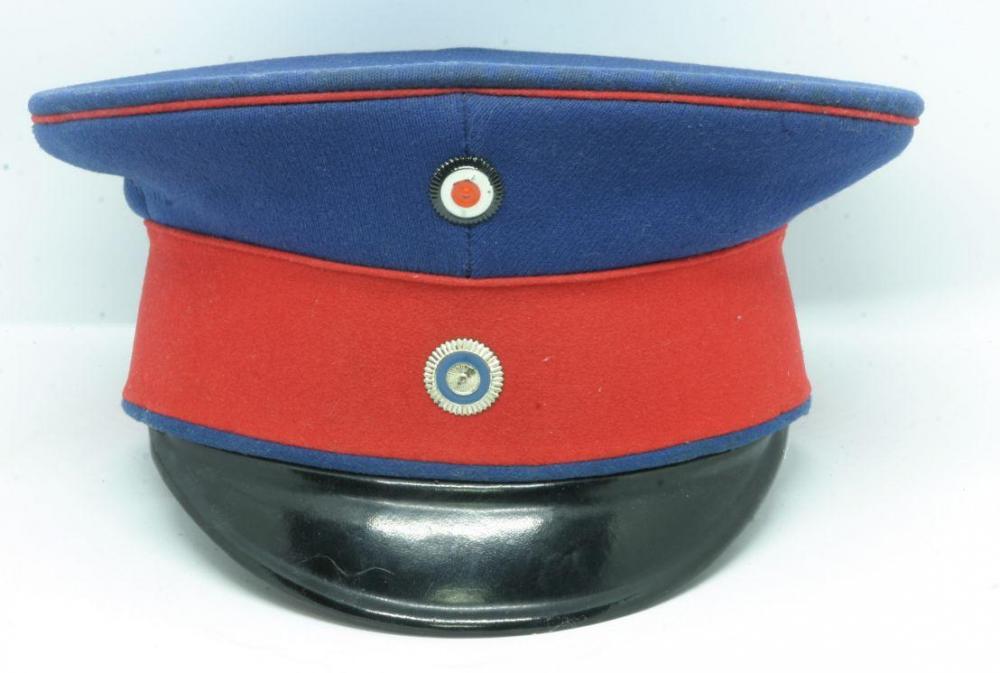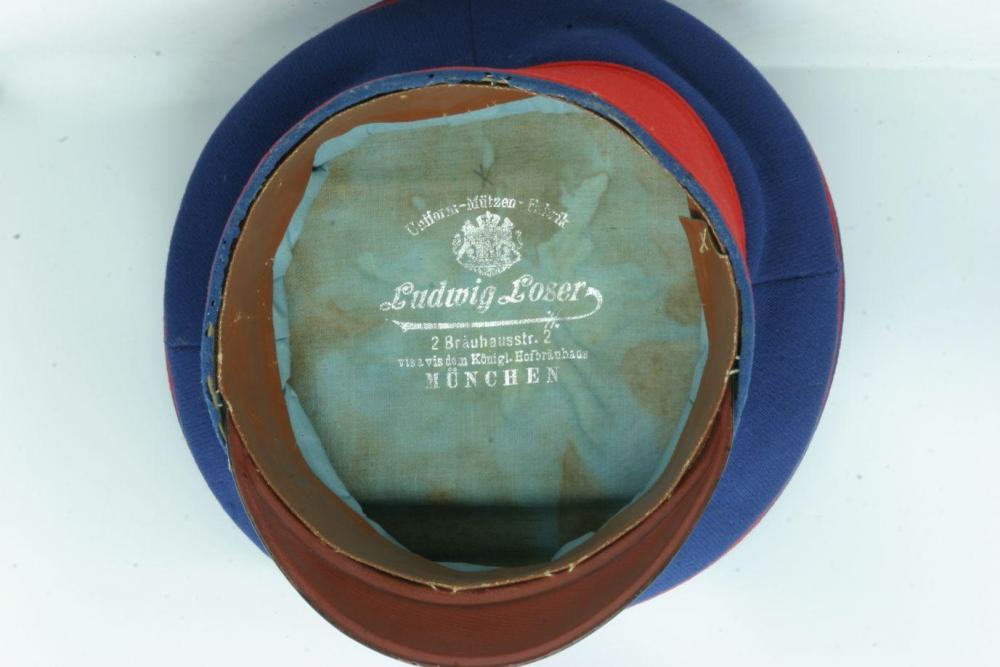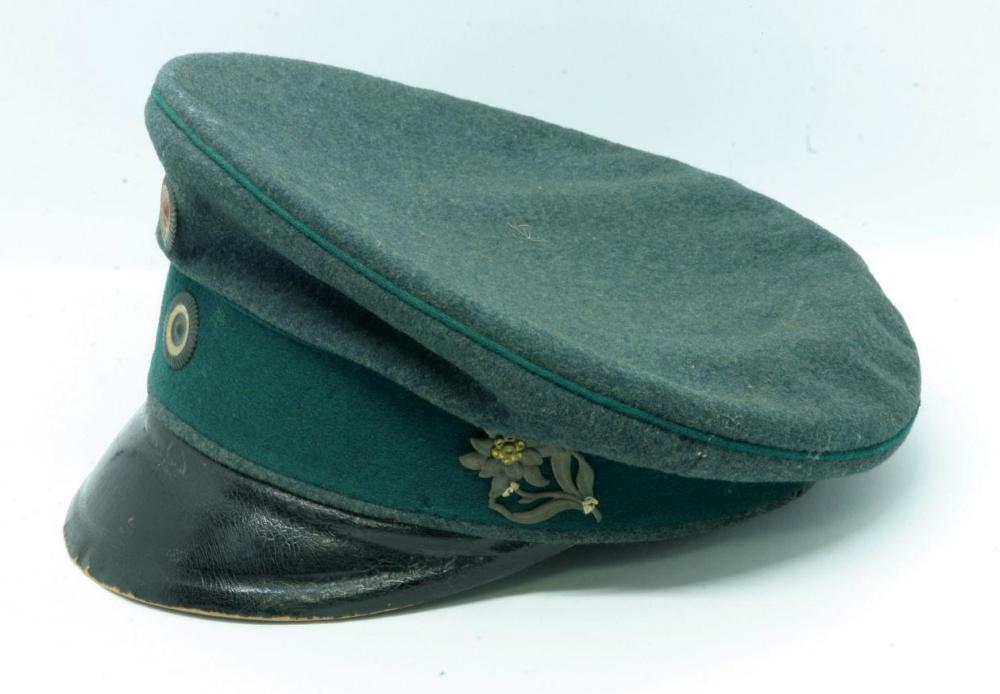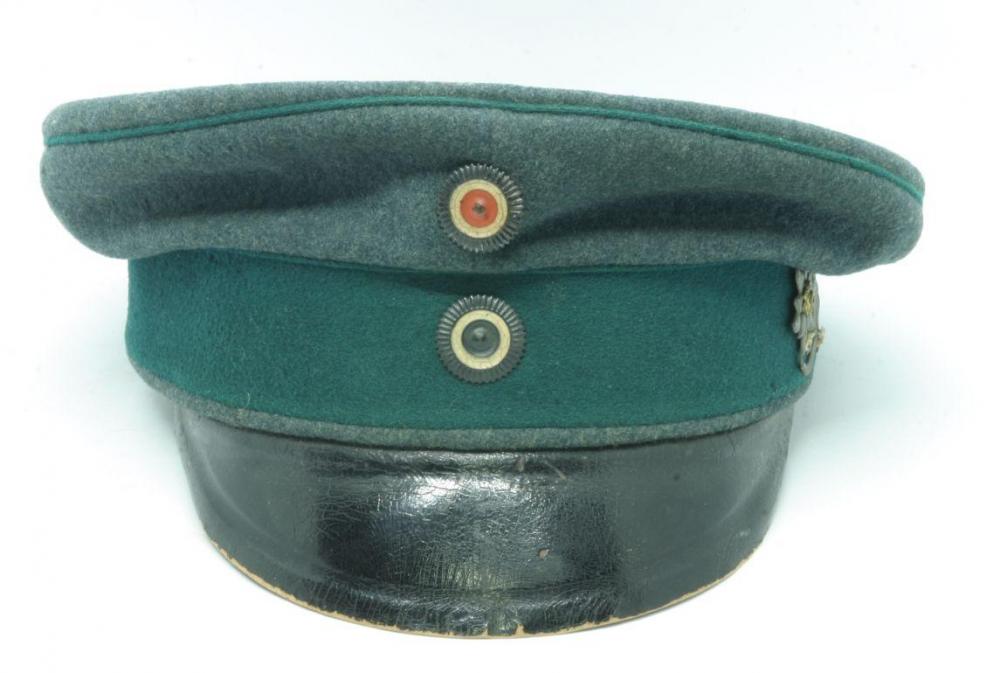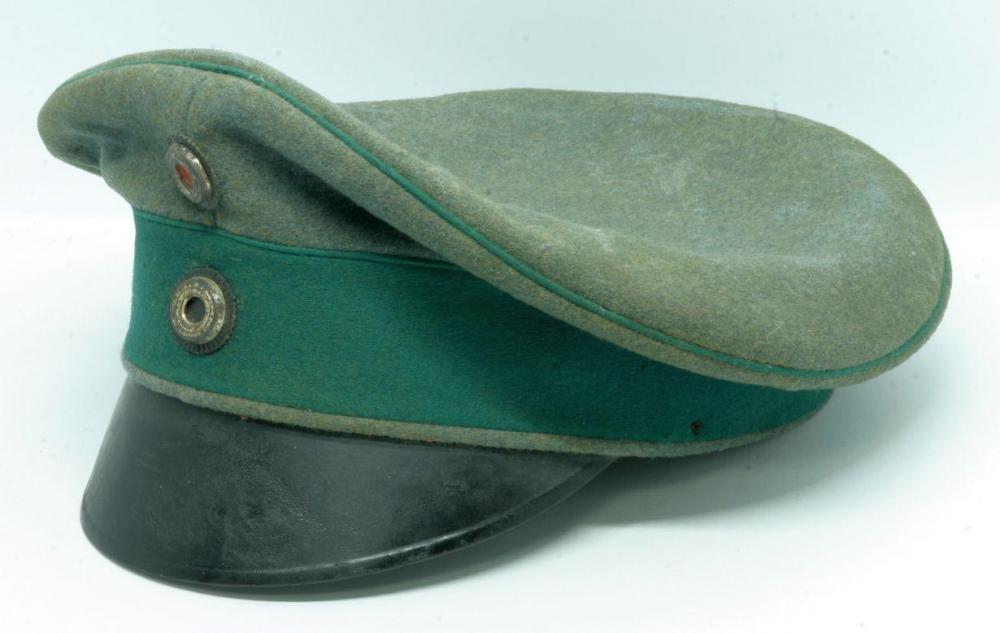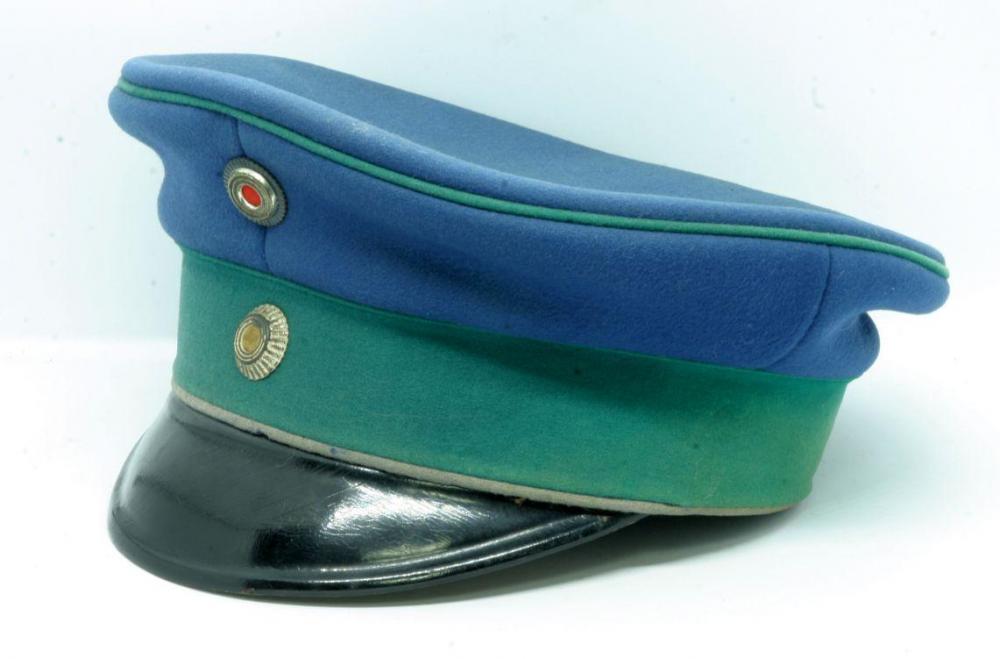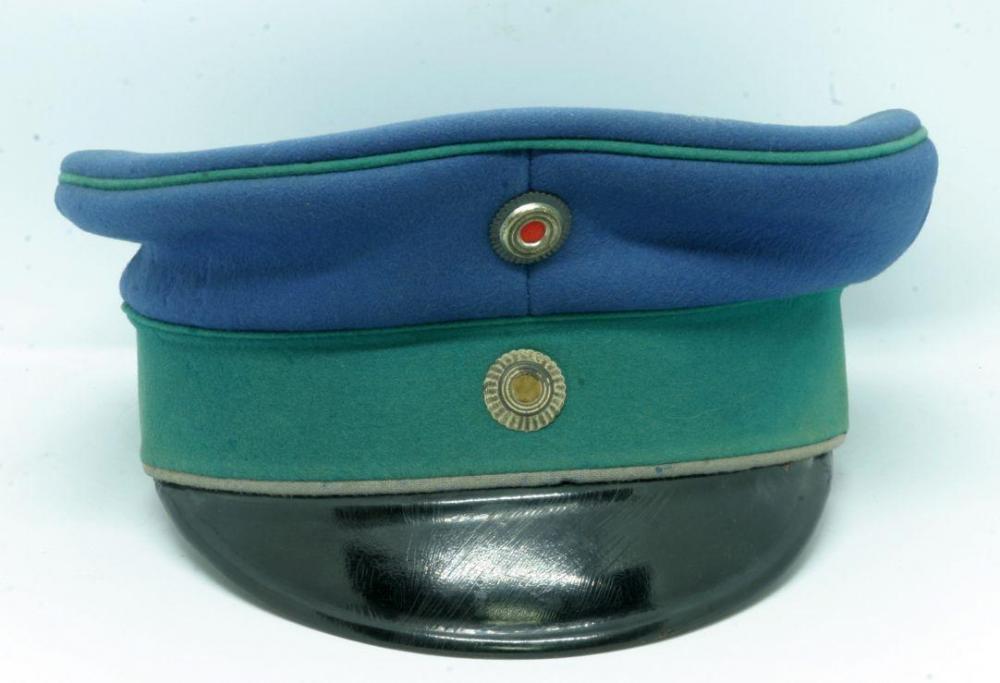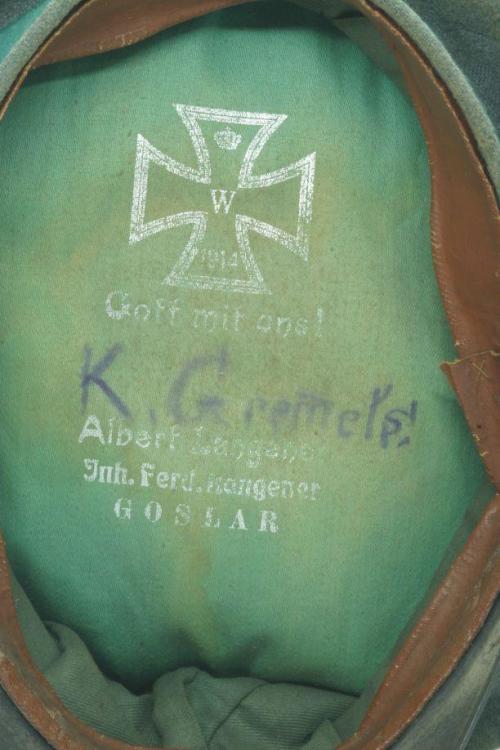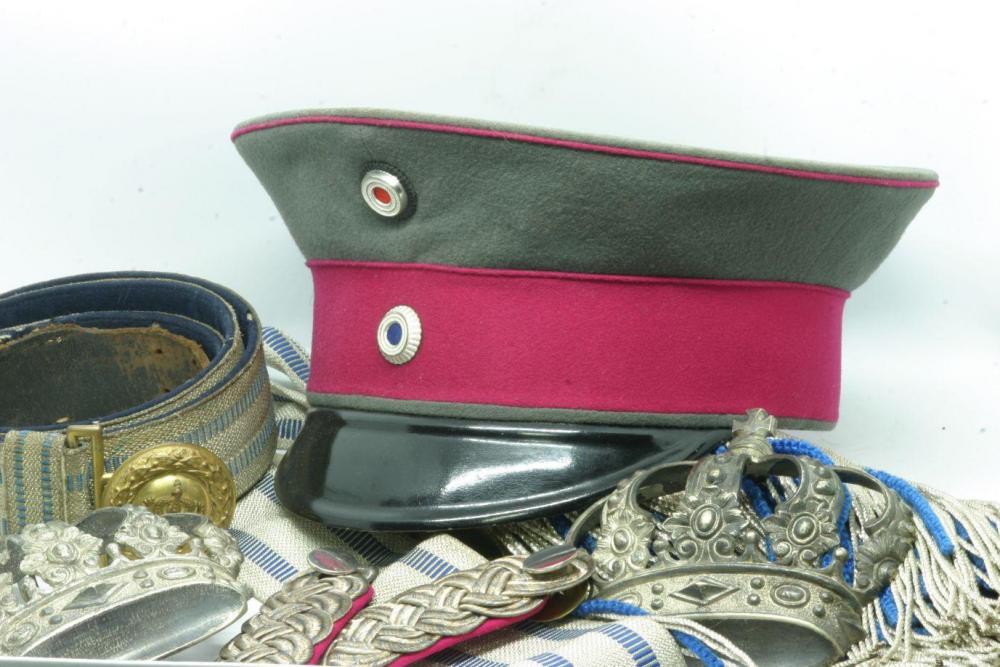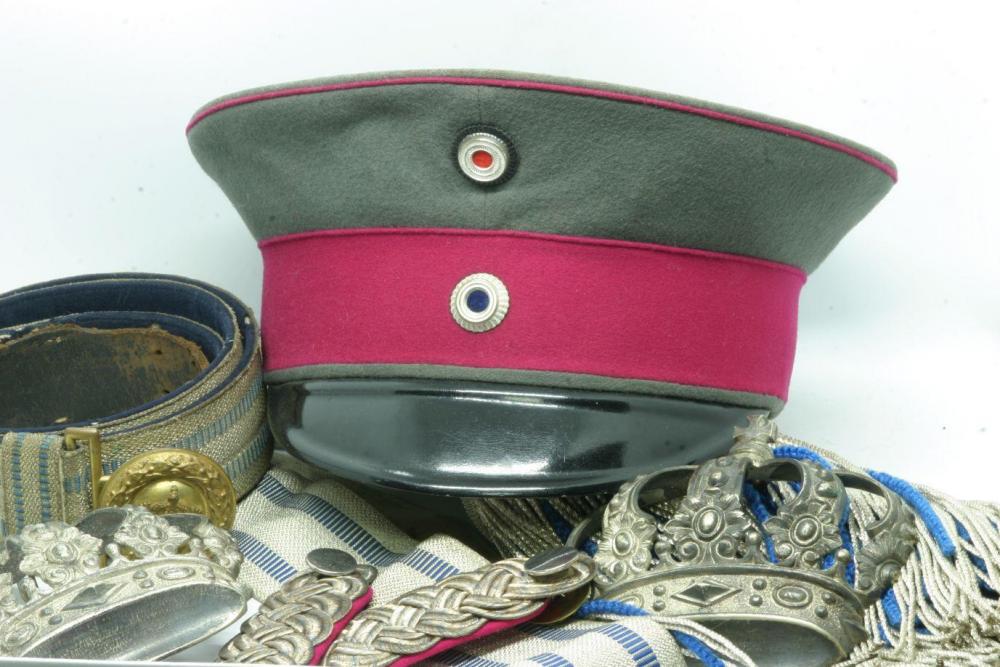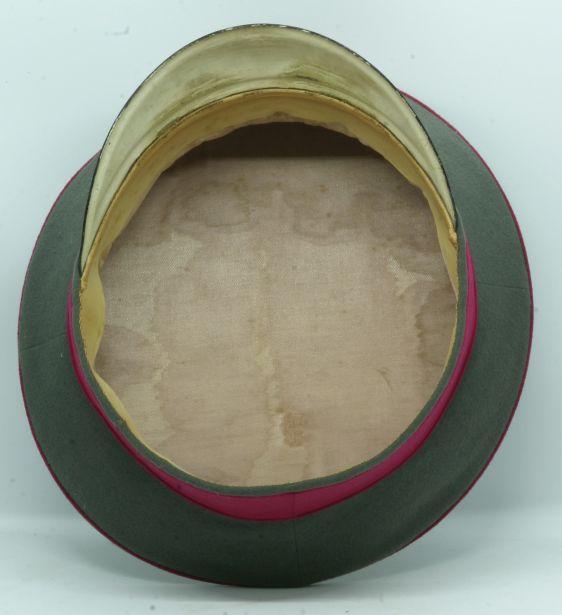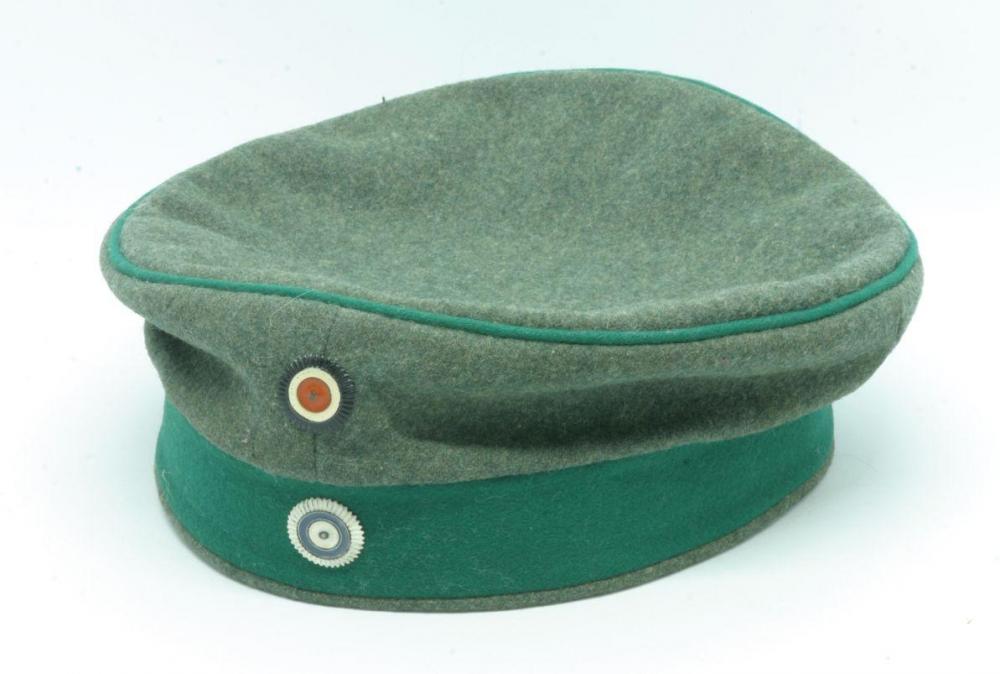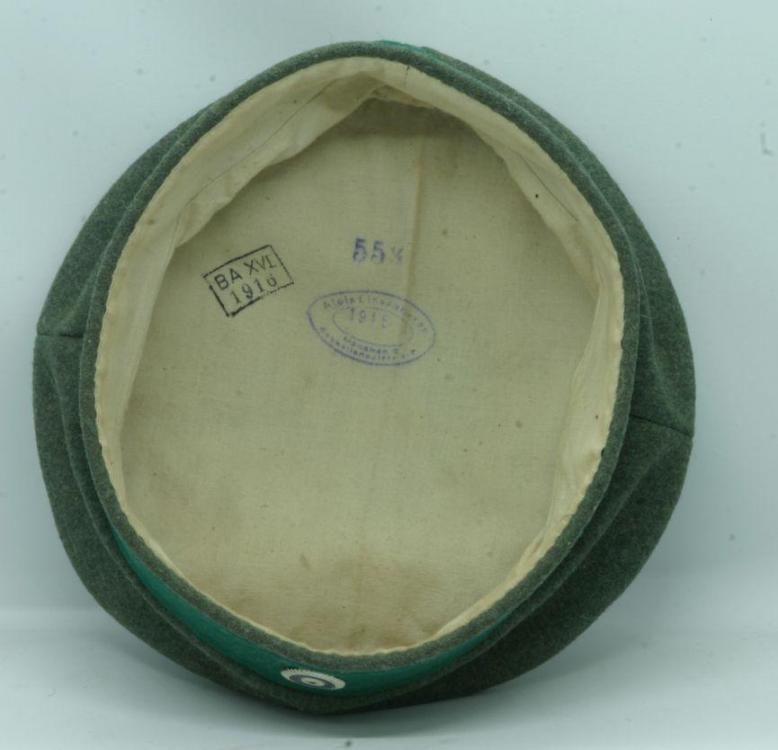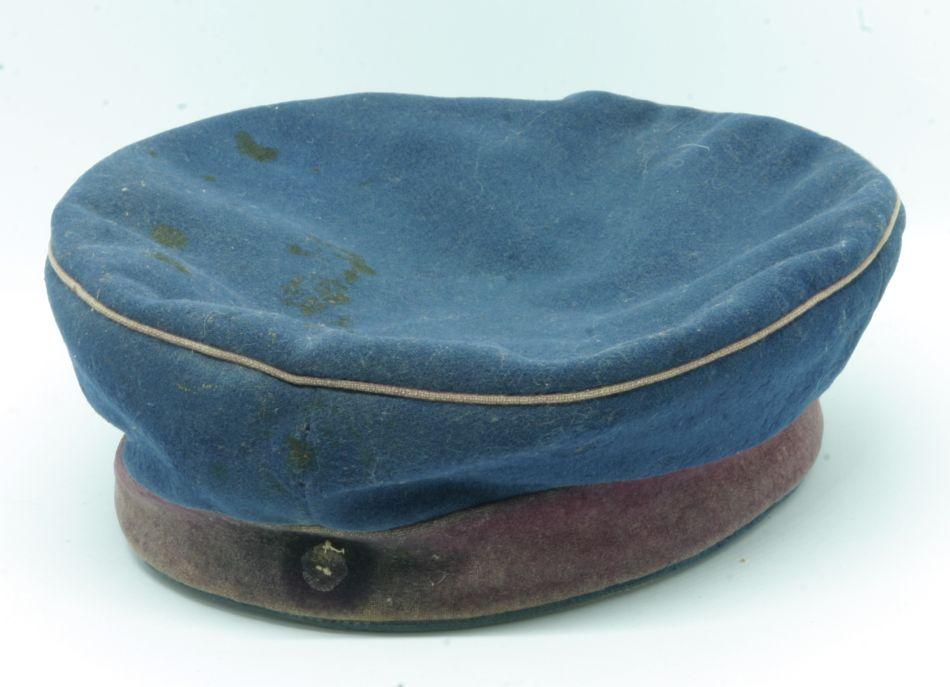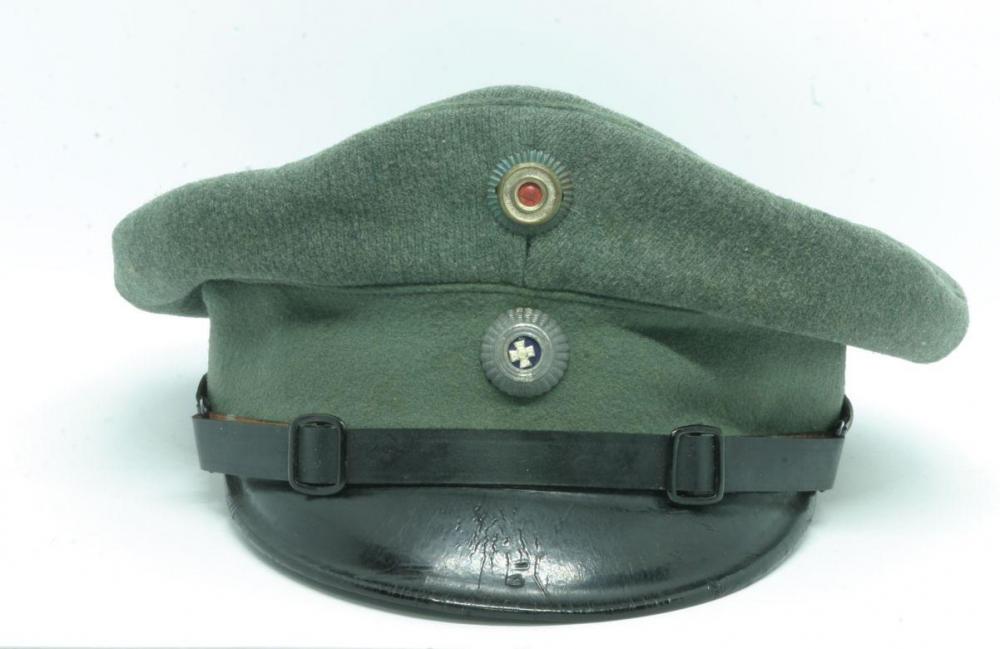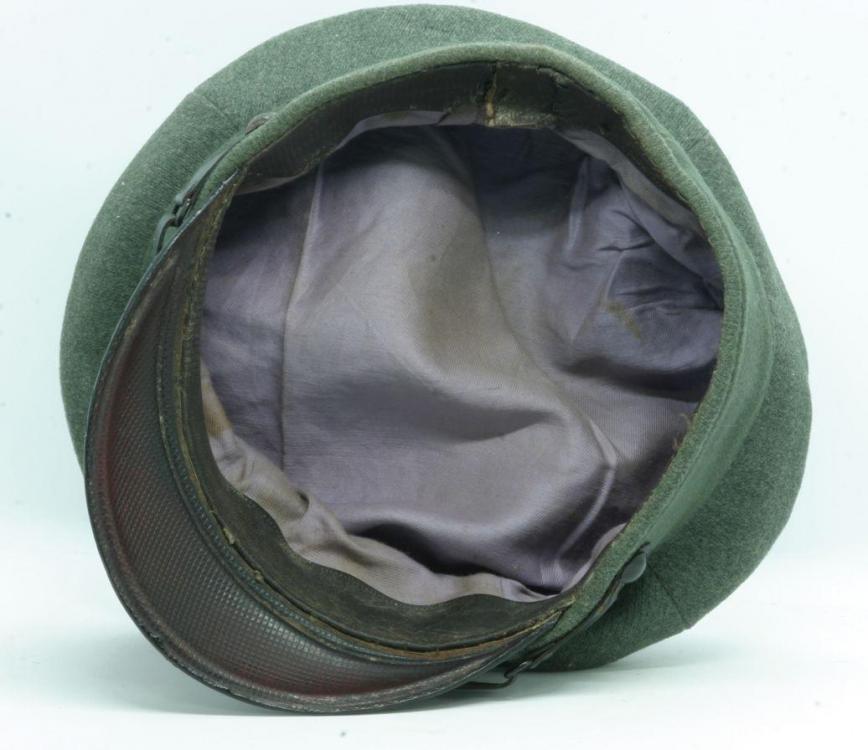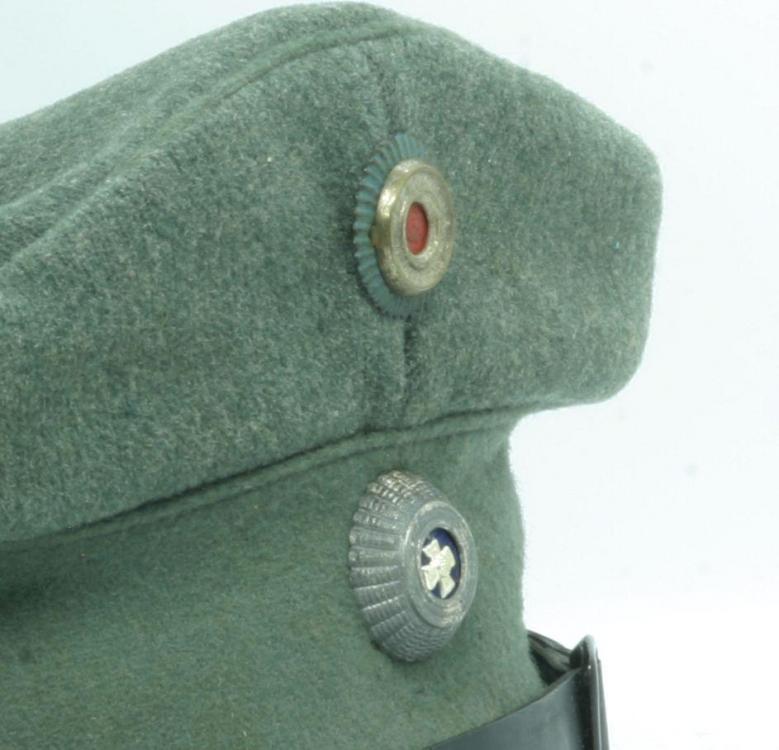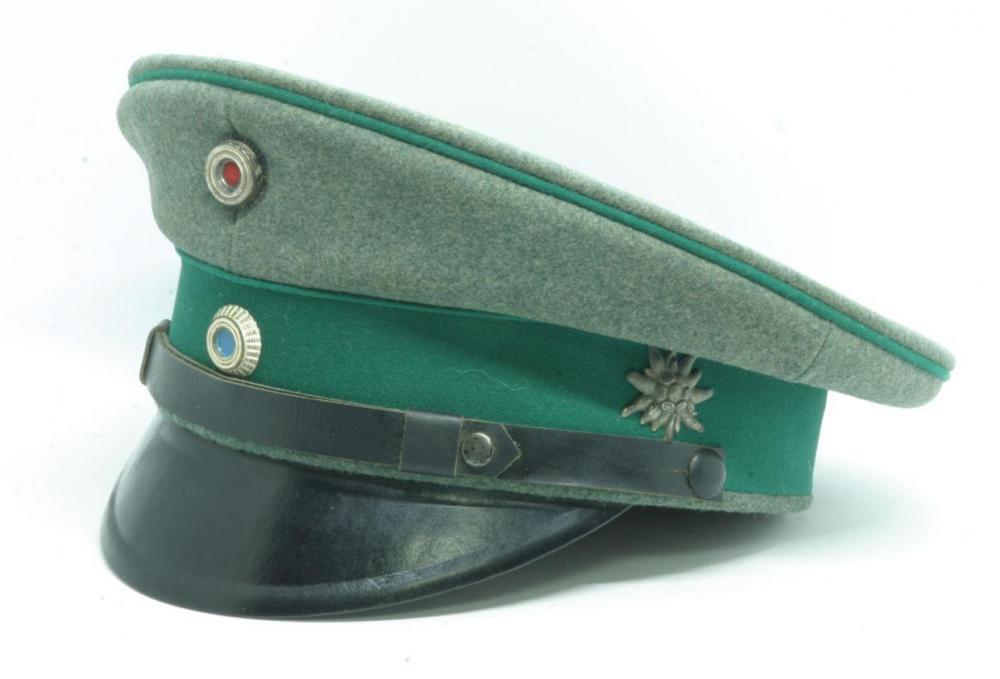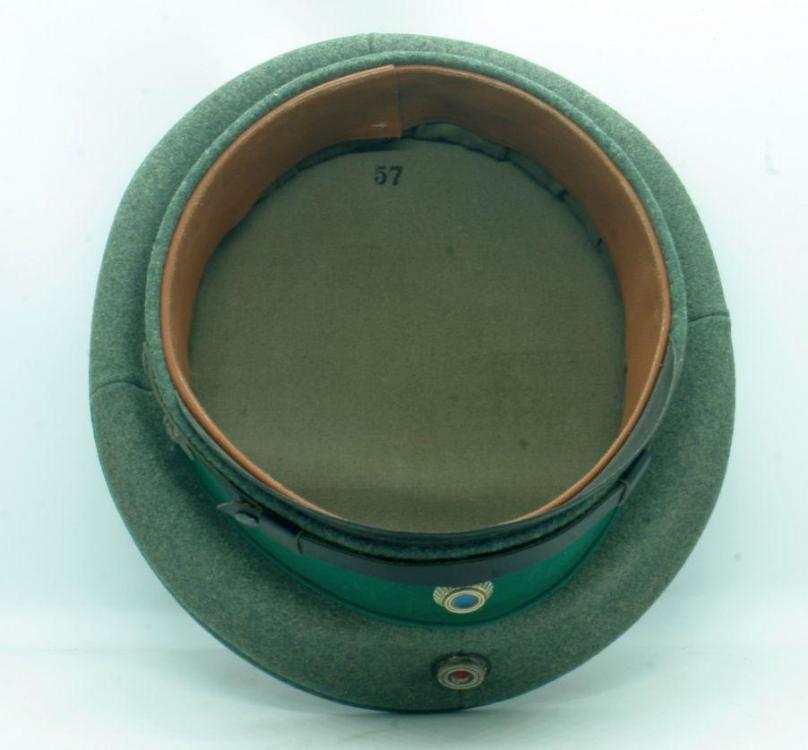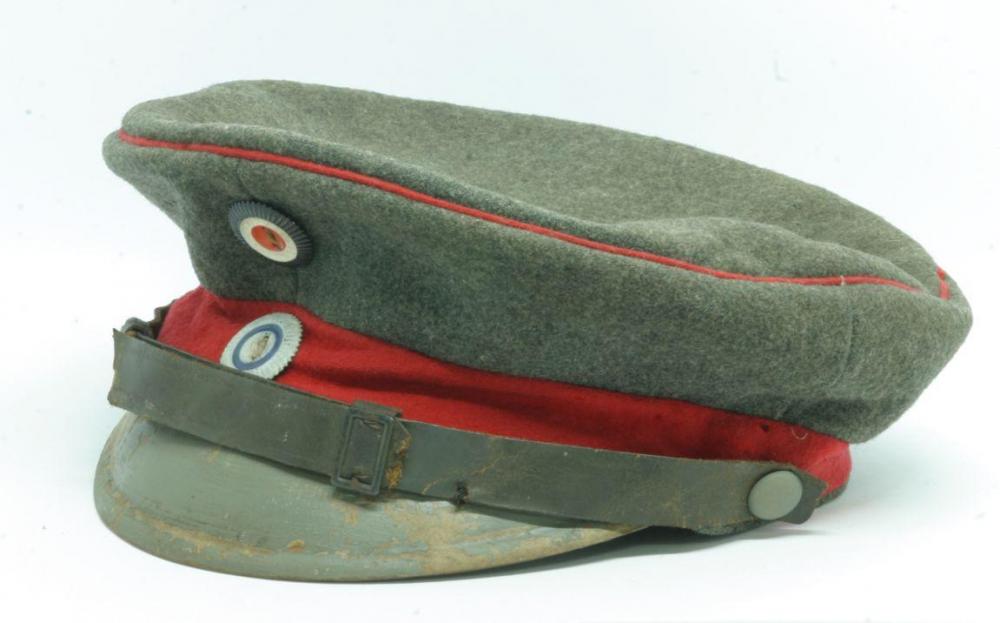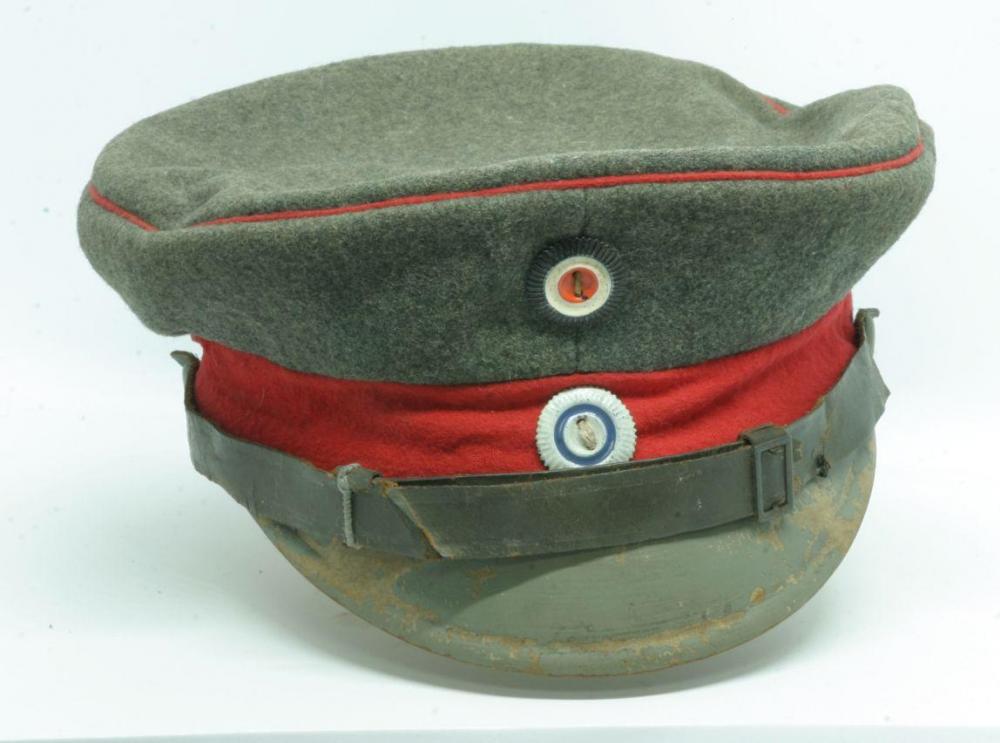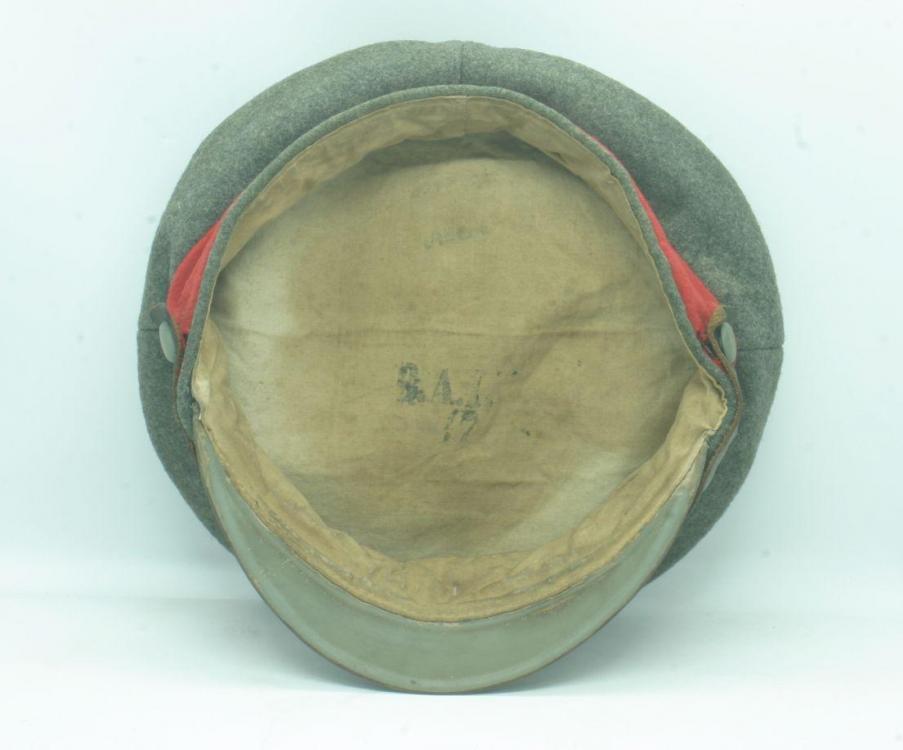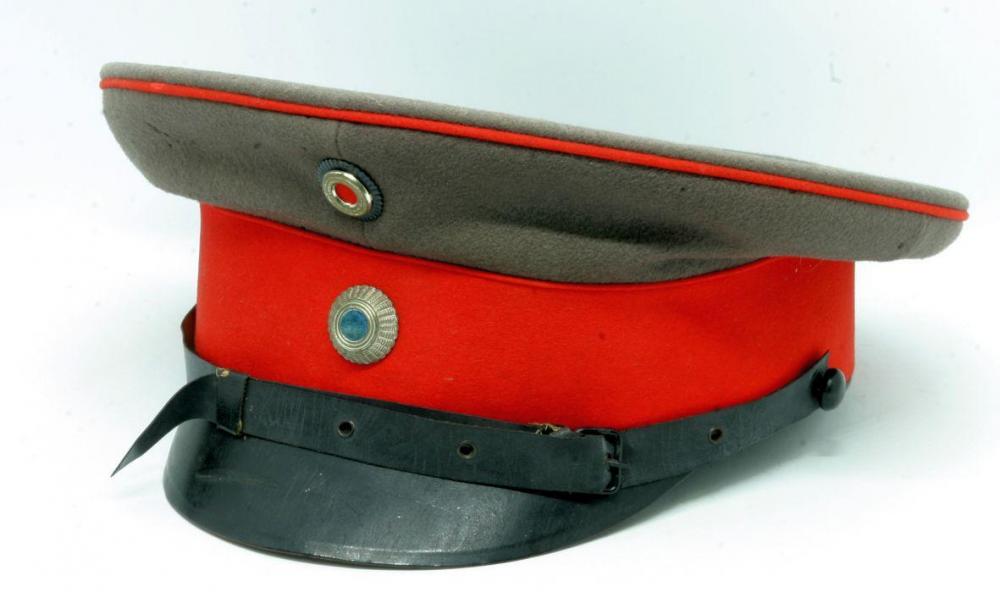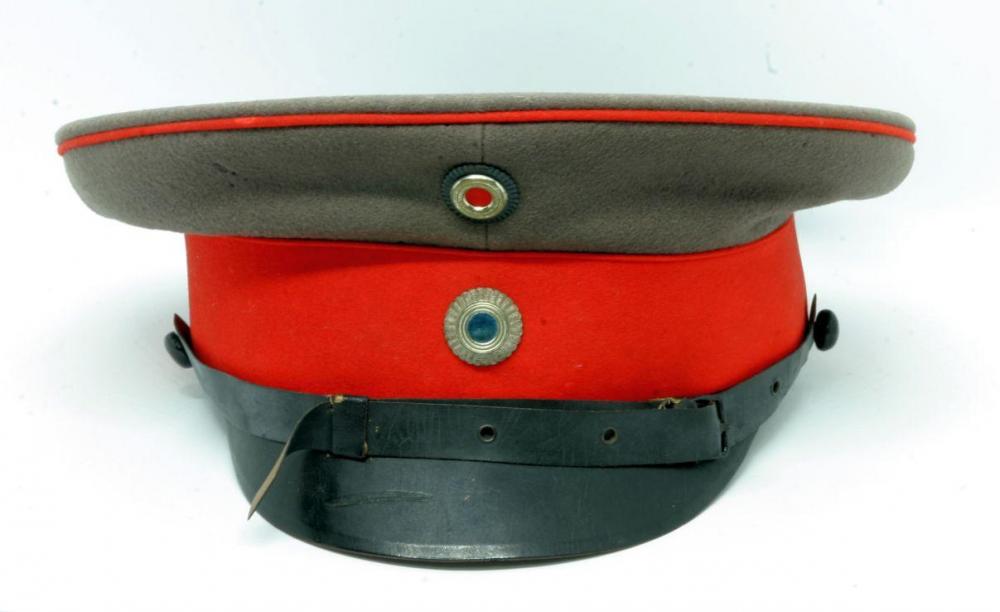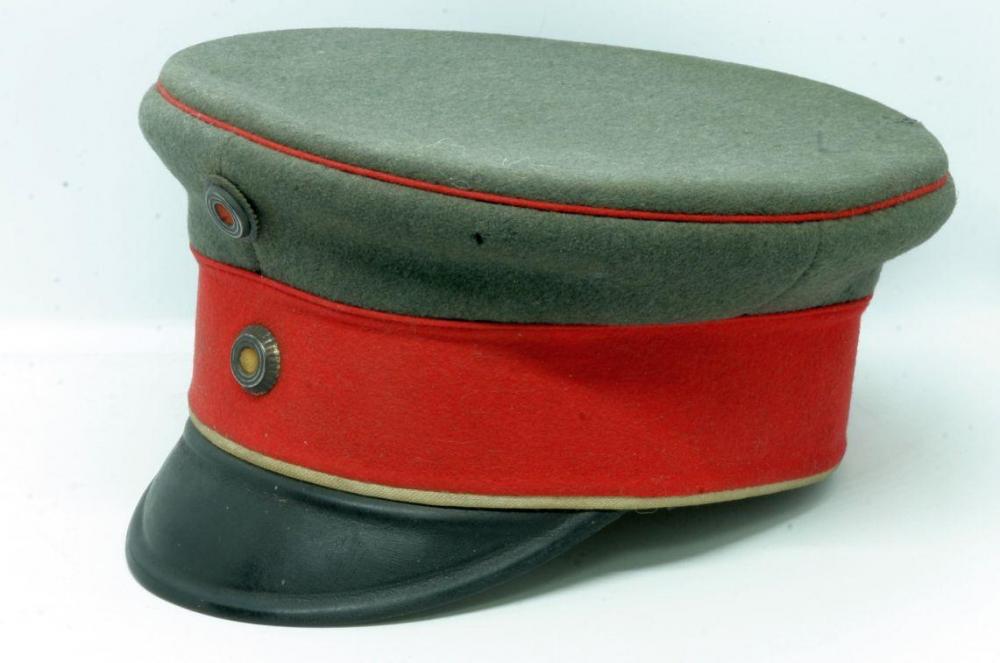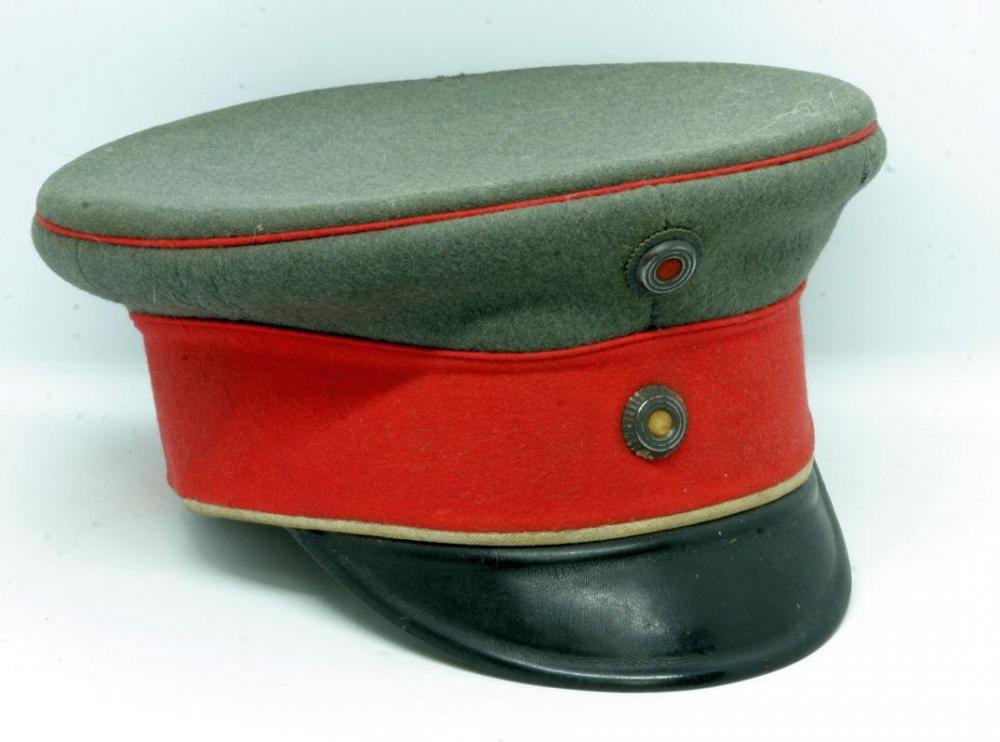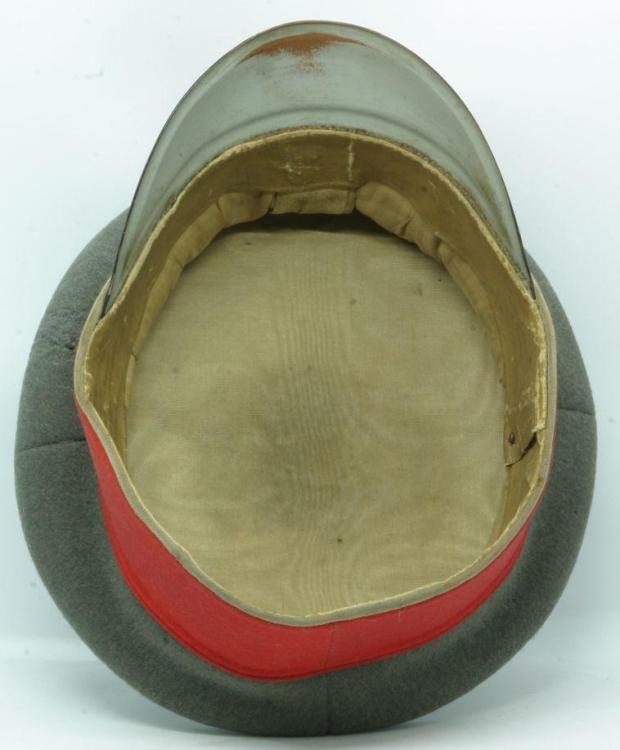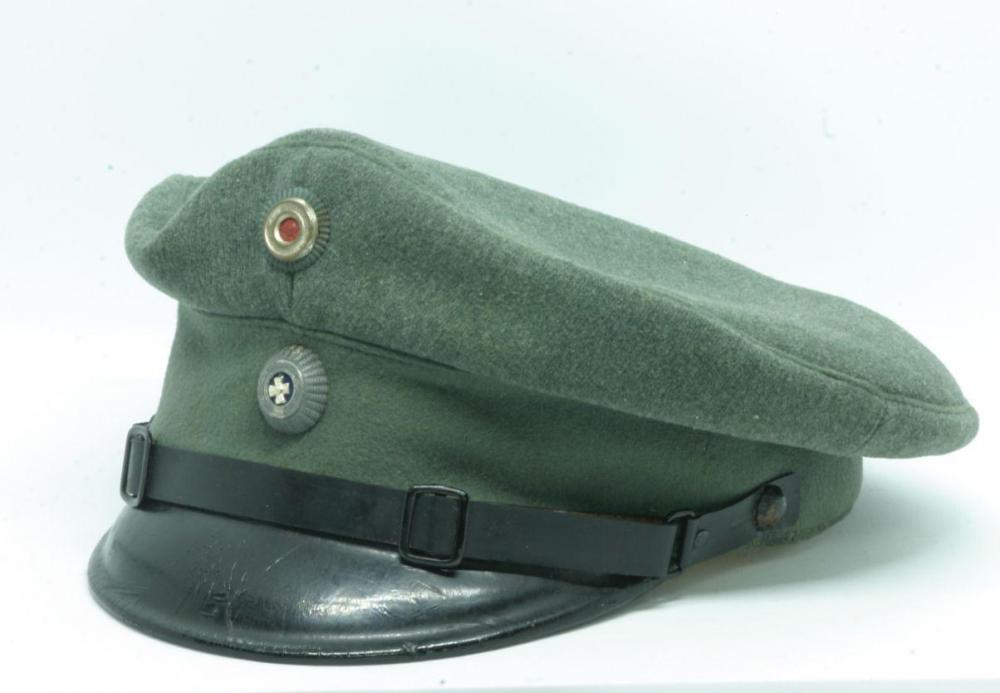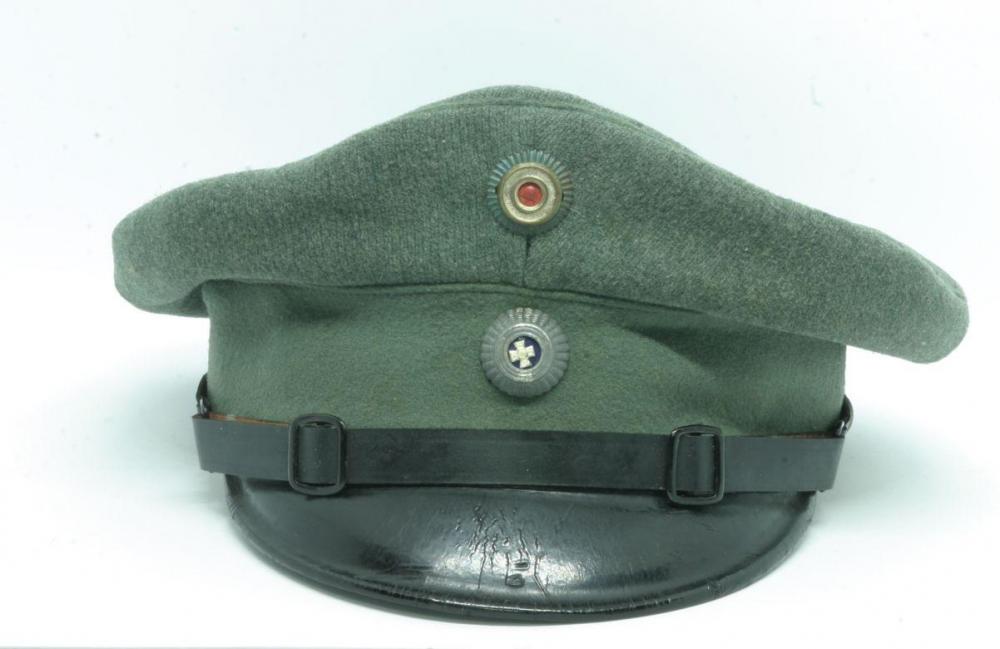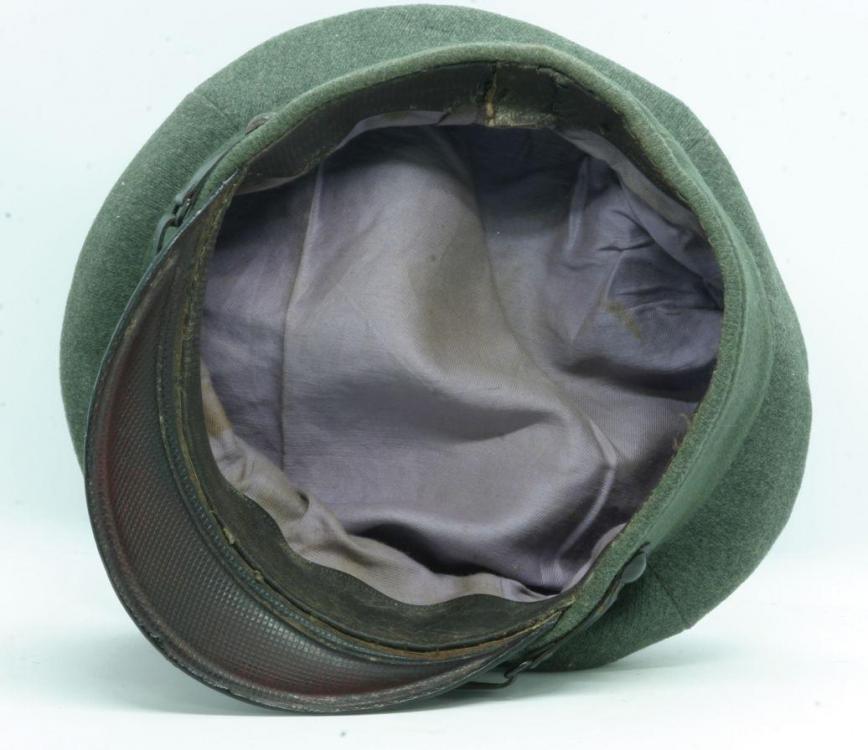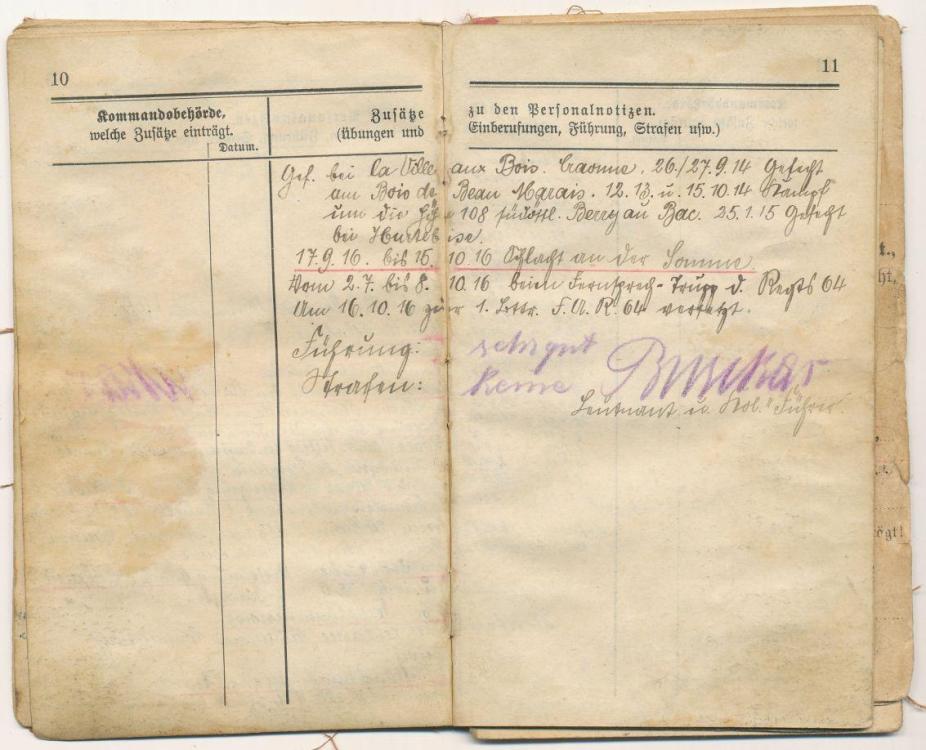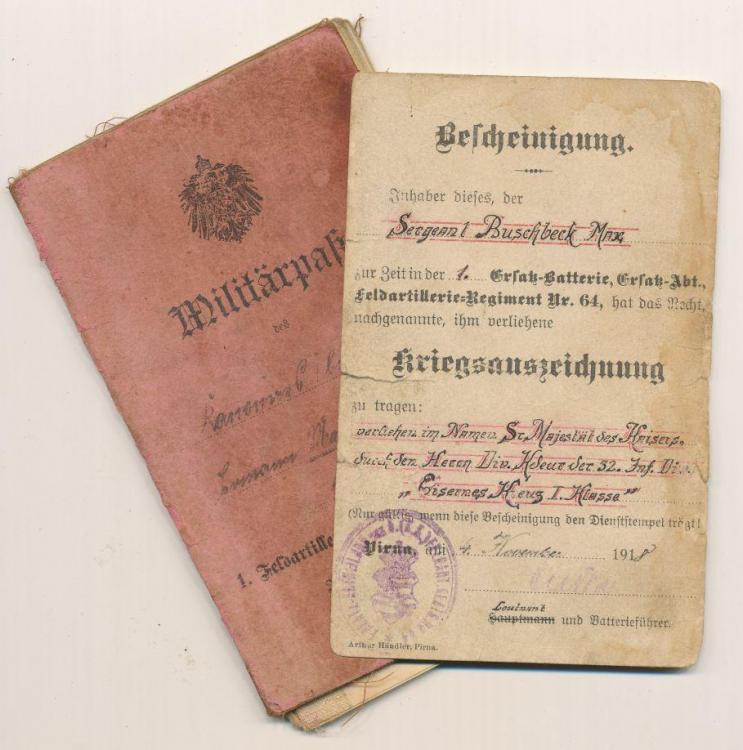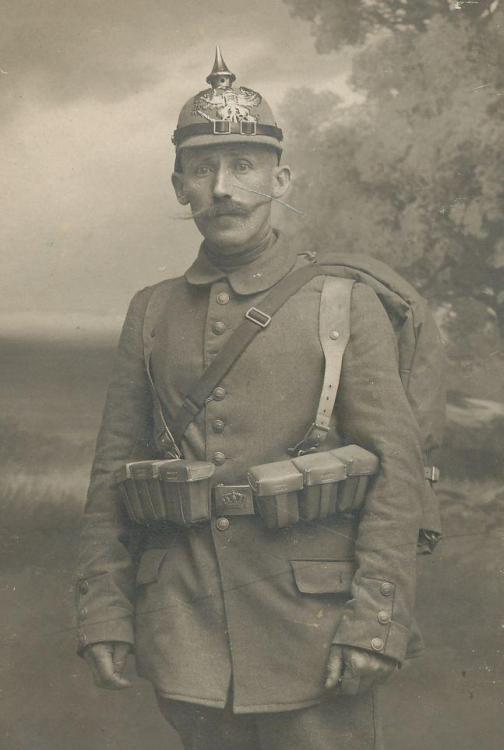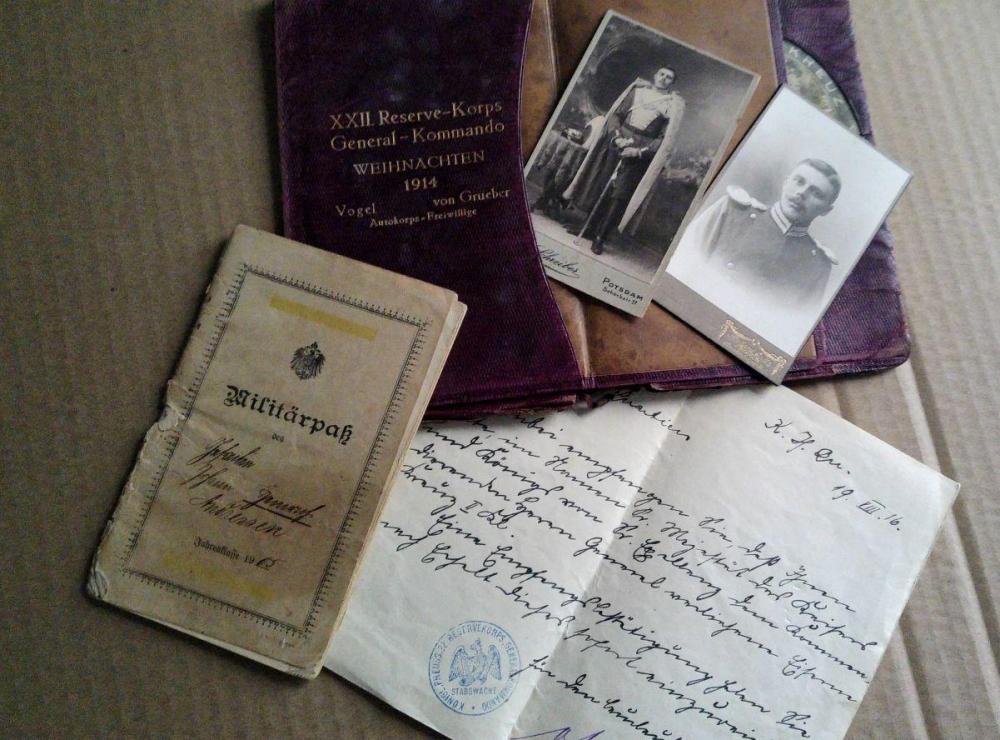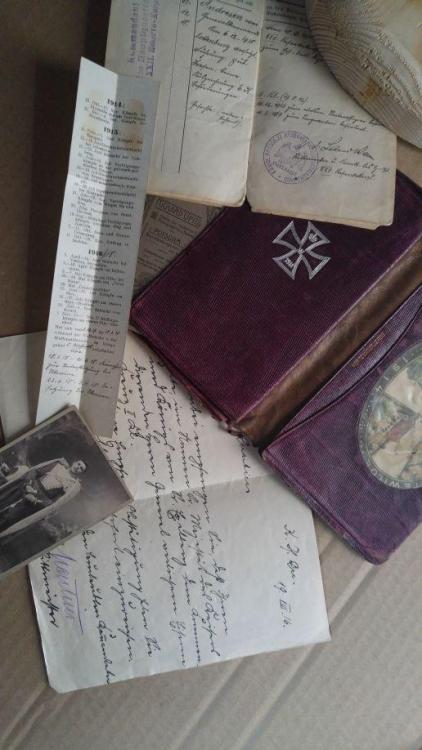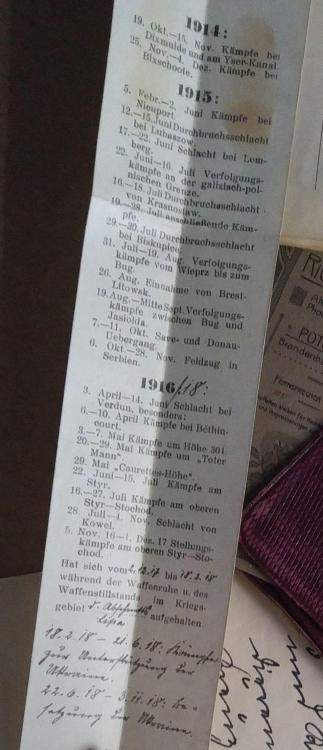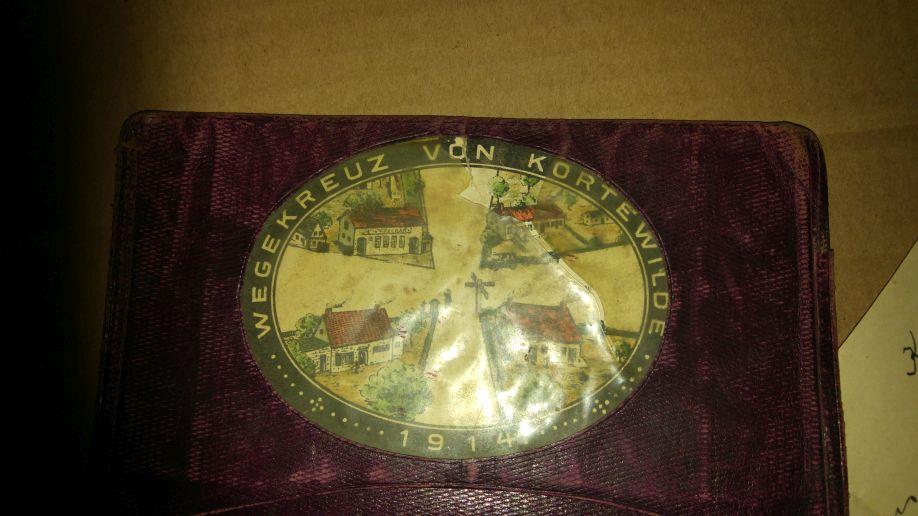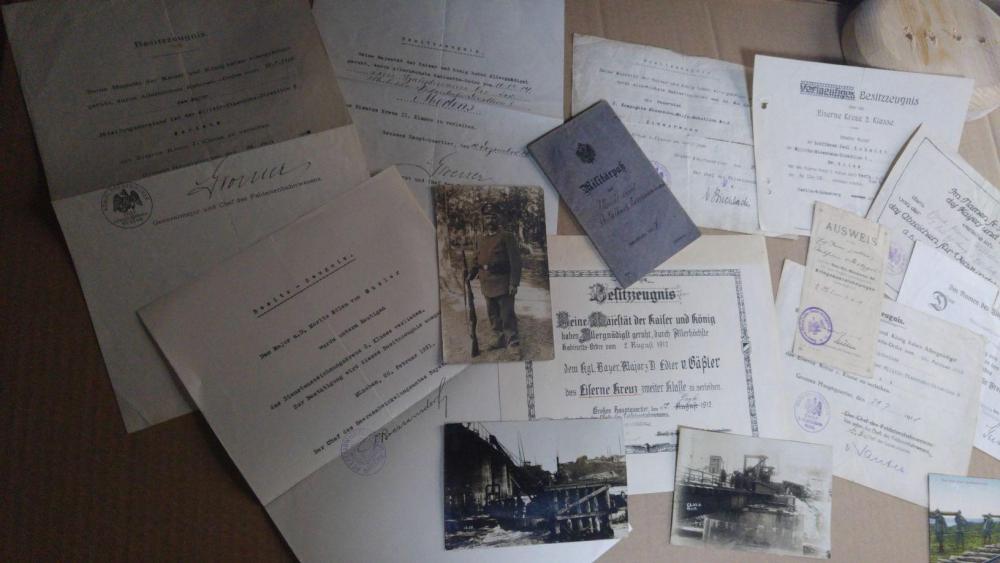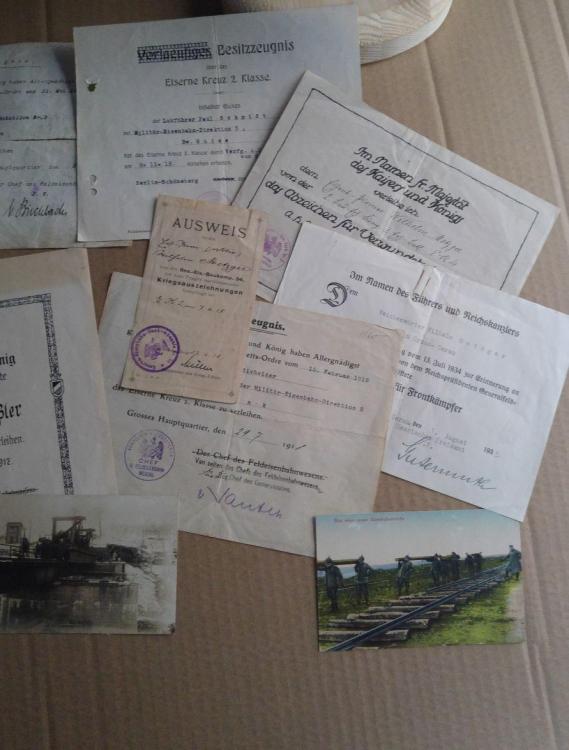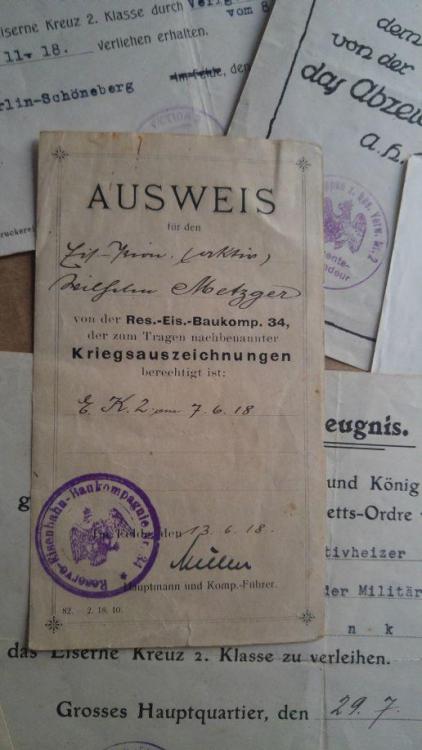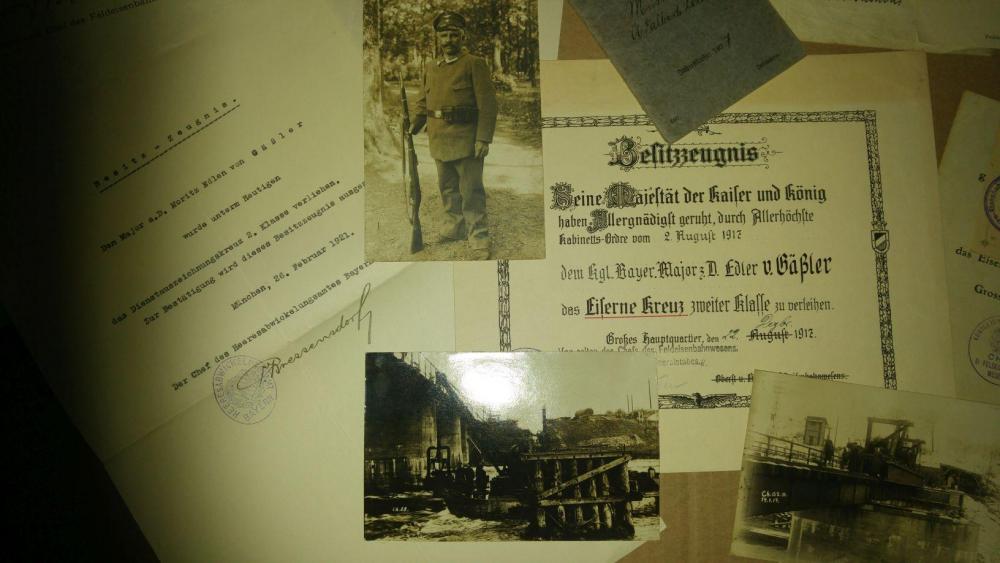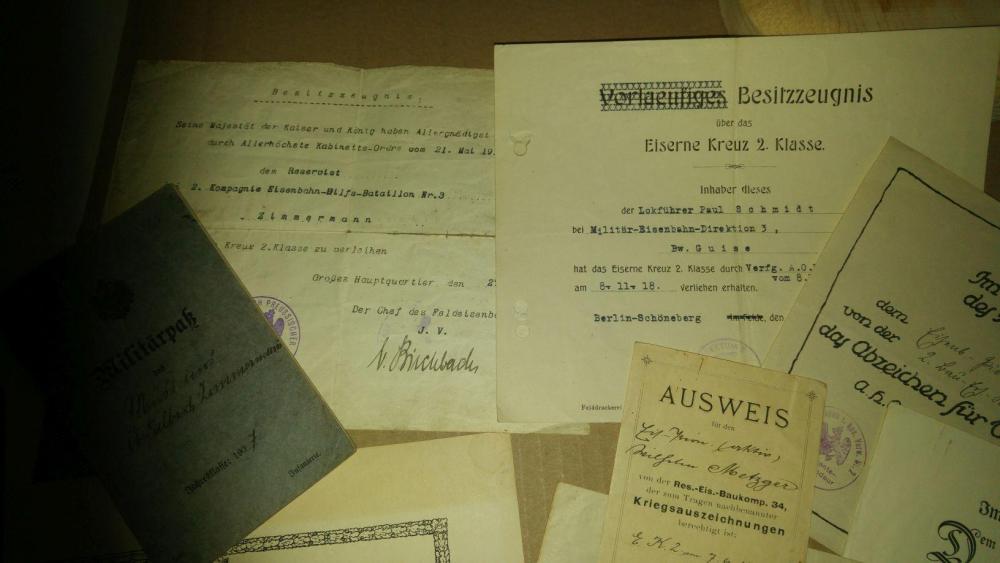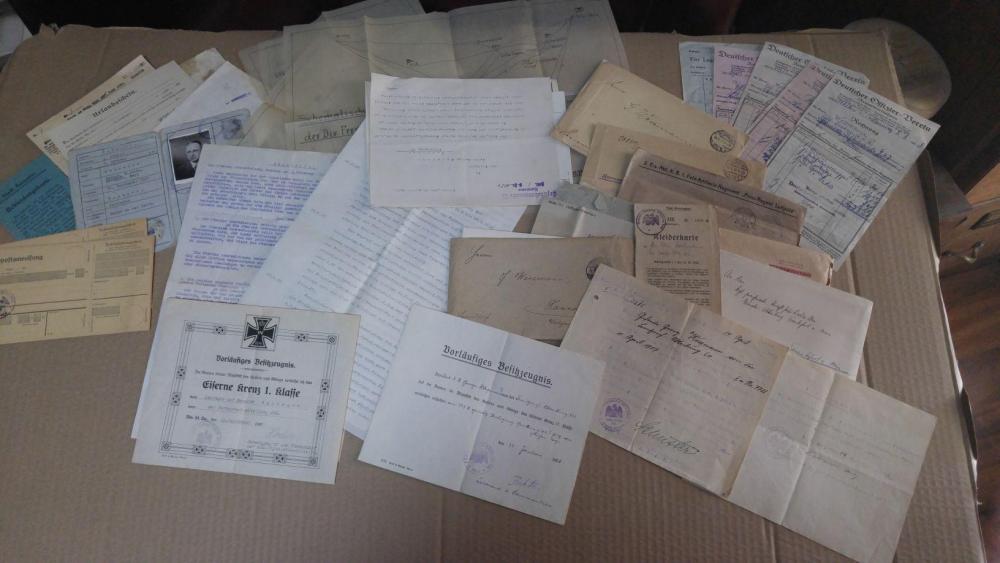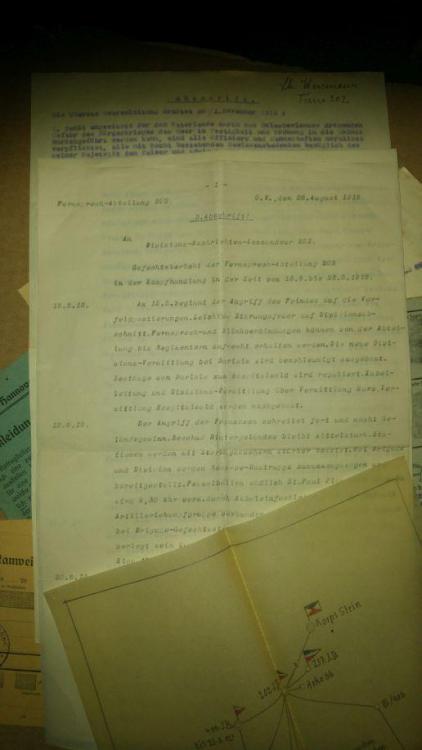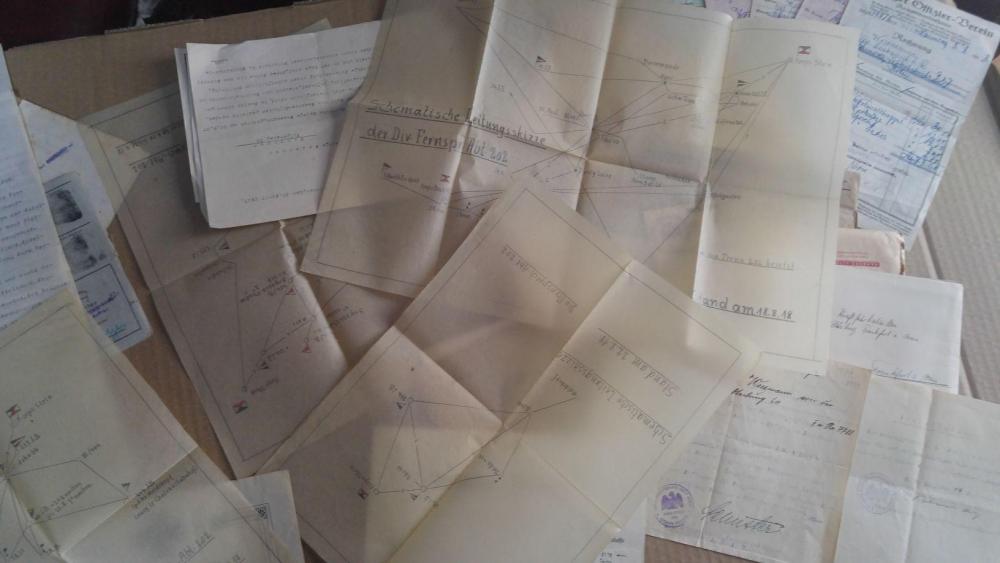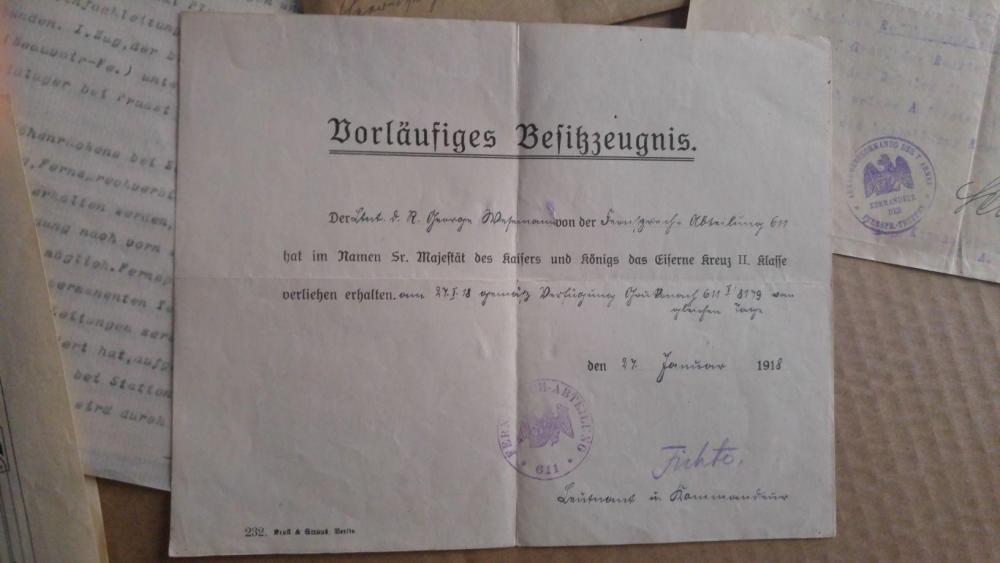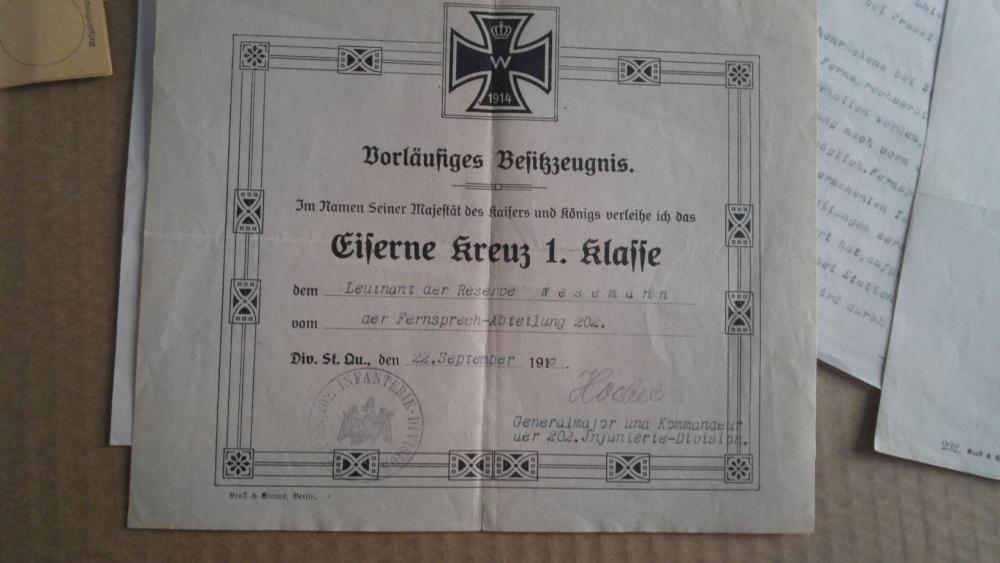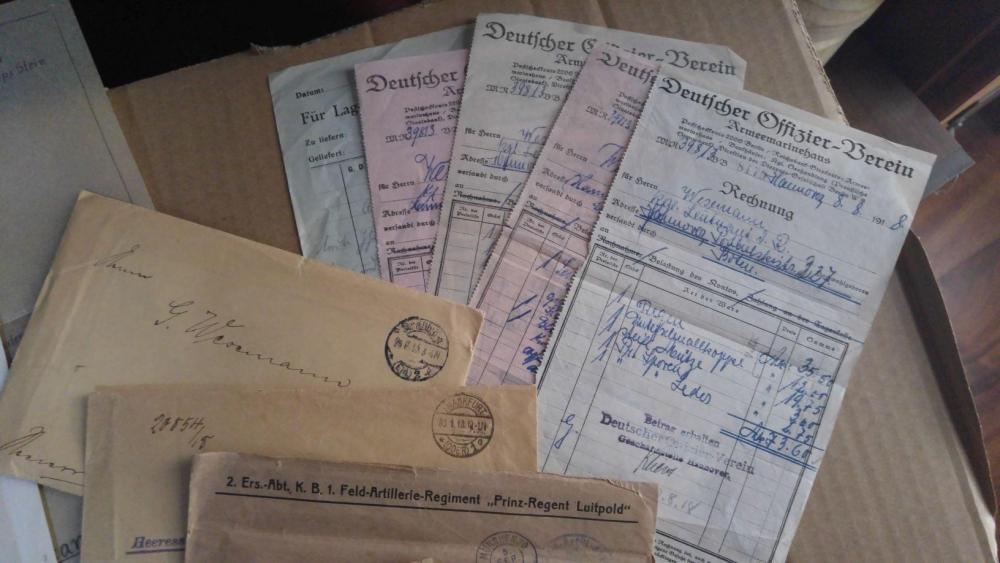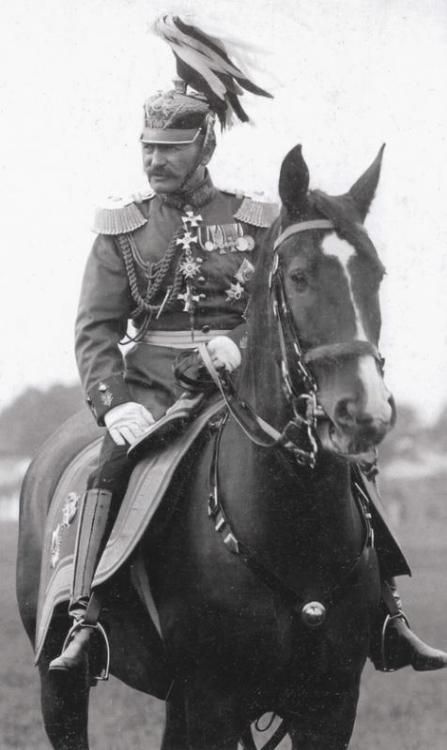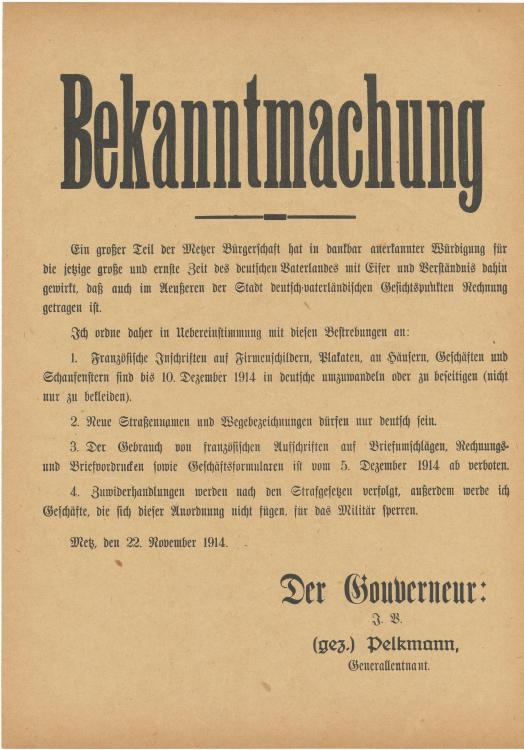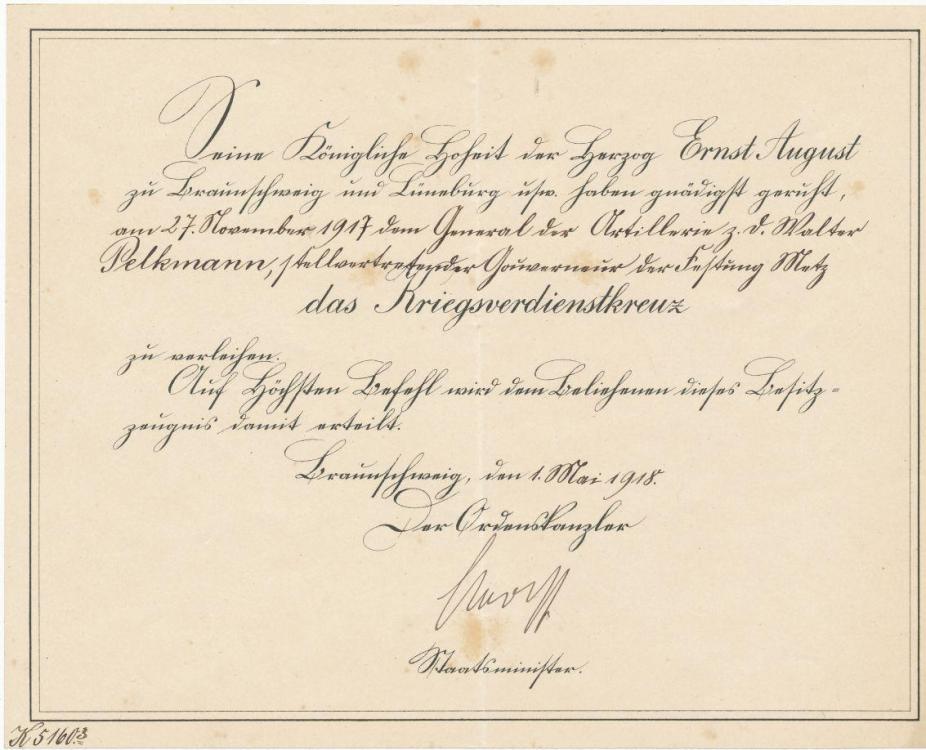-
Posts
29,251 -
Joined
-
Last visited
-
Days Won
84
Content Type
Profiles
Forums
Blogs
Gallery
Events
Store
Everything posted by Chris Boonzaier
-
Hi, Technically yes, but the traces in the cloth fitted the Bavarian Officers cockades (and the horrible pieces that were on the cap were Bavarian, although not put on to fir the traces). Krause also has a cap with the same piping set up with Bavarian, apparently the Fieldgrey band and piping was not very popular amongst the Bavarian officers and the "normal" color was often worn. He has a nice example on page 131 in the color volume, as well as a pic of a reserve officer. If course, in such cases we are on the same ground as a tunic with a MGSSA badge or Flamethrower skull... unless it is from the family you can never be 100% sure it "belongs"... but I think this one has a enough of a chance with the cockade traces to be bavarian. Hi, colorwise it is 100% the version on page 131, maybe my photo autocorrector gave it the jäger tinge
-
Hi, I will tell you the secret.... ;-) I got an LED light box on ebay... takes 10 secods to set up... then use any camera. that should work fine for almost all photos. I wanted to get as much focused depth in the photo, so... I went a step further, I have a canon SLR with an automatic release in a tripod. I have it on f16 to get as much depth as possible and a 135mm lens, So I am about 2m away from the lightbox.... it is in fact really easy.... here is the lightbox I bought.... it has built in lights.... https://www.ebay.de/itm/Portable-Fotostudio-Schiesszelt-16-Zoll-Kleine-faltbare-LED-Light-Box-Softbox-J9/132749366350?hash=item1ee87a944e:g:yh0AAOSwkjBbeJoJ
-
Hi, I read somewhere in Kraus that the Litewka was worn off duty when regiments were out of the front line, also by officers working in offices. This would have included officers in occupied countries. Case in point would be a regiment pulled out of the front line and at rest 20km behind the lines in an occupied village. In that case I tend towards the blue litewka with the fieldgrey. I am also wondering... is a Litewka and a picklehaube even possible (according to regulations)?
-
A question for a champion.... I read that the Litewka was worm in the field (behind the lines) with fiedgrey trousers during the war.... would I be wrong in thinking they were worn with a fieldgrey mütze? So a Bavarian officer off duty behind he lines would have had a Blue Litewka, Fieldgrey visor and fieldgrey trousers ? I doubt they would have been carting their blue schirmmütze with them on campaign?
-
Indeed... I cannot remember the exact date of the change but for the first couple of years of the war the "Armeekorps" had fixed divisions, and when they moved to a new sector the Armeekorps and divisions moved as a set. Later this was seen as not practical. The Armeekorps, or the later formed generalkommandos usually stayed in place with all their Korps troops (Fuss Arty etc) and became the experts of their sector. The Divisions however moved freely from sector to sector coming under the command of the Armeekorps in place. I am strongly of the opinion that this is why you see a change with the award process of the Iron Cross. Early in the war the Awards were approved by the General commanding a Corps, later in the war it was the general commanding a division. I believe this was because it was impossible to keep up with the administrative hassel of getting awards approved for a Division who had already moved 500 miles away. Of course, the Corps commander was still approving awards to Corps troops. The next batch... obviously there is no way of knowing how long this edelweiss has been on, but it "feels" good....
-
Hi, that is one of my Favourites :-) , It is hard to get a good shot of the color, but it is not Prussian bluegreen .... Admittedly with the stamp it is not a one looker, but with some research it fits perfectly. The maker stamp is a München firm. Basically the only question mark is the "XVI 1916" stamp... And once that is solved, it becomes a very interesting Feldmütze indeed. If you read the Alpenkorps list of battles for August September 1916, you get this.... 4.-19.8. Fighting at strongpoint Thiaumont 8.8. Retaking strongpoint Thiaumont 9.-15.9. Transport to Romania 26.-29.9. Battle at Hermannstadt There is a big "but" here.... the list of battles is the battles of the Alpenkorps... but it misses a couple of weeks where the Alpenkorps command were separated from their fighting units In the last weeks of August the fighting troops of the Alpenkorps were just a ragged bunch of survivors... What the German command did was the following... The XVI was just to the North in the Argonne, so the fighting troops of the Alpenkorps transferred under the command of the XVI to reform, and the fighting troops of the XVI were sent to Verdun under Alpenkorps command to continue the fight. As the Argonne was relatively quiet, the 2-3 weeks here were used to fully reequip the Alpenkorps fighting units with replacement troops and equipment while the XVI troops were at Verdun. Then after the first week of September the Alpenkorps command with it's newly reformed and kitted out combat units transferred to Romania. To do this the Uniforms, headgear, equipment needed must have been delivered to the XVI in advance to be issued to the Alpenkorps. So we can really pinpoint the 2-3 weeks that this was issued in. For me the only down side is, a Bavarian Jäger Mütze stamped 1916 would be a Grail piece, if it still had the dust of Verdun in its seems... and this one obviously missed it all by weeks :-( ... but still, it was really interesting doing the detective work on this, and a nice moment when the "Ahhh... of course!" lightbulb went off..... Hi, it is staff officer though, not field clergy ;-)
-
I know I will regret posting this..... I found this trawling through my "soon to go's" ... I remember the bloody fight I had to go through to win the auction... it was really something I had to have.... The Militärpass has some fantastic battle entries, Berry au Bac, Hurtebise, then the bigger battles, Somme, Champagne, Flanders, Verdun... then ending up in the middle of the US advance during the Meuse Argonne offensive, for which he seems to have gotten his EK1. The Pass has the FAM in silver and Bronze, plus EK1 and EK2.... and even at this late time of the war they tried to decorate his EK1 doc a bit....
-
Here is an interesting group.... he was on the Stabswache of the 22nd Reserve Korps throughout the war.... Flanders, Eastern Front, Verdun, Ukraine.... the burgandy leather wallet was for members of the staff of the corps for X-Mas 1914... I expect the "Korte Wilde" was an important action for the Korps in 1914.....
-
Yeah... poor guy... refused by artillery regiments.... he did not even dare to try the infantry!! The division seems to have been hit by a major French offensive in August 1918 and the Fernsprech guys moved mountains to keep up the communication, I am guessing that is why he managed an EK1. The actions were in August and the report and overlays cover this period. the fact that he kept these and the EK1 was awarded in September makes me think there is a definite connection.
-
This is a very interesting group to a young Field telephone Lt d. res. It starts off with a number of application letters to various units,he wanted to volunteer as a 1 year freiwillige in 1915. Most units said "thanks but no thanks, we have enough of those" ... he then served as a Gefreiter and was headed to promotion as a Lt. d. Res... but he was broke. The military wrote to his father saying the promotion was based on a guarantee by the father that he would help support the sons costs as an officer until the son was earning enough to do it himself.... to the tune of RM2400 a year. I thought that was only done in the British army!! Then the full set of reciepts for his kit, bought from the DOV. Then his award docs, and what is very, very nice, map overlays and a 4 page official account of his sections part in the fighting in August 1918 for which he got his EK1.
-

EK 1914 An excited telegram!
Chris Boonzaier replied to Chris Boonzaier's topic in Germany: All Eras: The Iron Cross
" Overview of the area. Les Éparges is about 18km southeast of the Formule 1 in Verdun, Chris, so you really have no excuse if you haven't visited the area yet. " I know! I know! :-( I need to get there...... -
Deputy Military Governer of Metz Generalleutnent und General von der Fussartillerie Walter Pelkmann. Walter Pelkmann entered service as a Portepee-Fähnrich in Fußart.-Rgt. Nr. 2 on 1 October 1874. He was pensioned in 1913 after having served as commander of the Fussartillerie Brigade in Metz from 1907 to 1911. Pelkmann was reactivated and assumed the role of Deputy Military Governor of Metz at the outbreak of the war. He served in this position until the 9th November 1918. Walter Pelkmann died in Berlin in July 1919. The document is a direct communication from the Chef des Militär-Kabinettes in the Kaisers HQ informing Pelkmann that the Kaiser has awarded him the Iron Cross 1st class. The Militär-Kabinett seems not to have issued preliminary award documents, official award document presumably planned for after the war as was the case for the 1870 Iron Cross. Pelkmann received his Iron Cross 1st Class (noted diagonally on the left of the letter) and this letter. This document was signed by General Moritz Freiherr von Lyncker Photo: "The witching hour of midnight had already struck when we quite suddenly caught sight of the Deputy-Governor of Metz, General von Pelkmann of the Artillery, a little man with a grey moustache, very eccentric, with very decided views on life, on the universe, and on the whole creation generally." (Sven Hedin: With the German Armies in the West) Bekanntmachung: Metz became “German” in 1871 but in 1914 there was still overwhelming French language influence. Although in the City itself there was an approximate 4:1 ratio of German to French speakers, in the surrounding areas the Ratio of French to German was about 6:4. This decree signed by Pelkmann in 1914 called for the Germanisation of everything from street signs to the writing on shop windows. Failure to follow the law could lead to legal charges or businesses being black listed by the army.
-

EK 1914 An excited telegram!
Chris Boonzaier replied to Chris Boonzaier's topic in Germany: All Eras: The Iron Cross
Artillery is a bit like herpes.... if you are in the wrong place at the wrong time... you will wake up slapping your head sying "how did that get there????"



